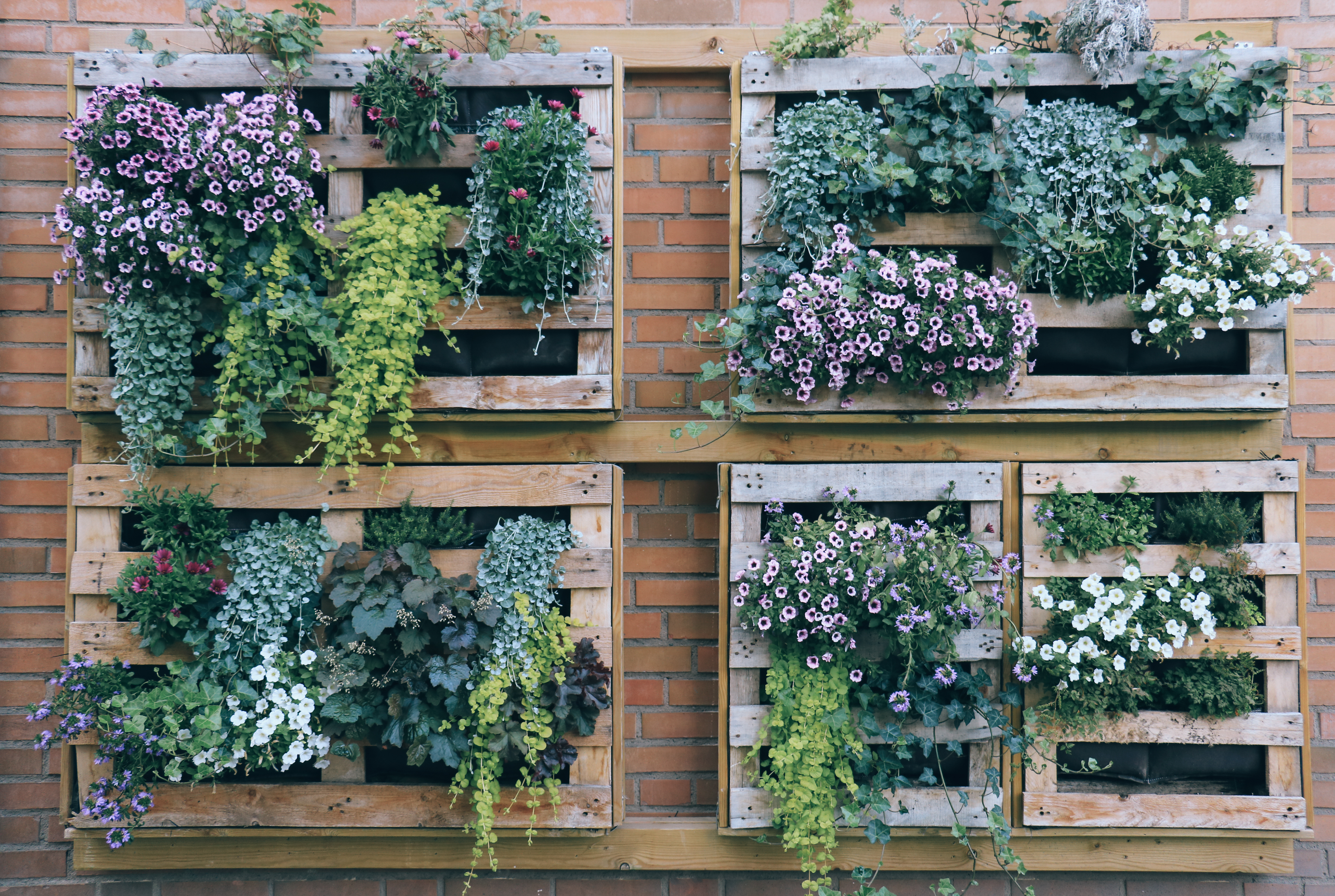

Vertical gardens are an amazing way to beautify walls and any type of small space for that matter – inside or out.
Using the vertical plane for planting offers the opportunity to make the most of walls, fences, and barriers to grow everything from vegetables to perennial plants and more.
Plus, it's really budget-friendly if you're willing to do a little DIY. Knowing how to create a vertical garden is especially useful and one of the more creative garden ideas too, which can of course be carried across into courtyards, backyards and onto balconies, front porches, and larger outdoor spaces and even into the home.
Set to be one of the biggest trends, especially in the UK with Google searches for vertical gardens up by +485%*, if you're a gardening enthusiast and wanting a natural but next-level addition to your home, look no further than vertical gardening.
What is vertical gardening?
It's in the name – vertical gardening is growing along and up vertical surfaces in and around your outdoor or inside space. Growing vertically offers many possibilities to grow both ornamental and edible plants.
Contrary to living walls, vertical gardens usually work by direct greening, – meaning that you'll use climbers that will find their own way up a support such as a trellis – or by playing around with elevated planter displays. These are great garden wall ideas as you can use fence panels, shelving, and much more, it's a great way to get creative.
We spoke with Stannah’s Gardening Expert, Mark Lane who makes frequent appearances on TV show, BBC Gardeners World, about how vertical gardens are not only a great small space solution but also a good way to create an accessible garden space.
'If you want to grow delicious veggies or fruit but are limited on space, then consider a vertical garden. This trendy technique involves growing plants on a vertically suspended panel, that’s either freestanding or attached to a wall.'
Easier to reach for many and sure to free up floor space, vertical garden ideas are a really great option to ensure that everyone gets to enjoy the act of gardening. These are our favorite ways to start up a vertical garden display.
1. Create a living wall as a vertical garden idea
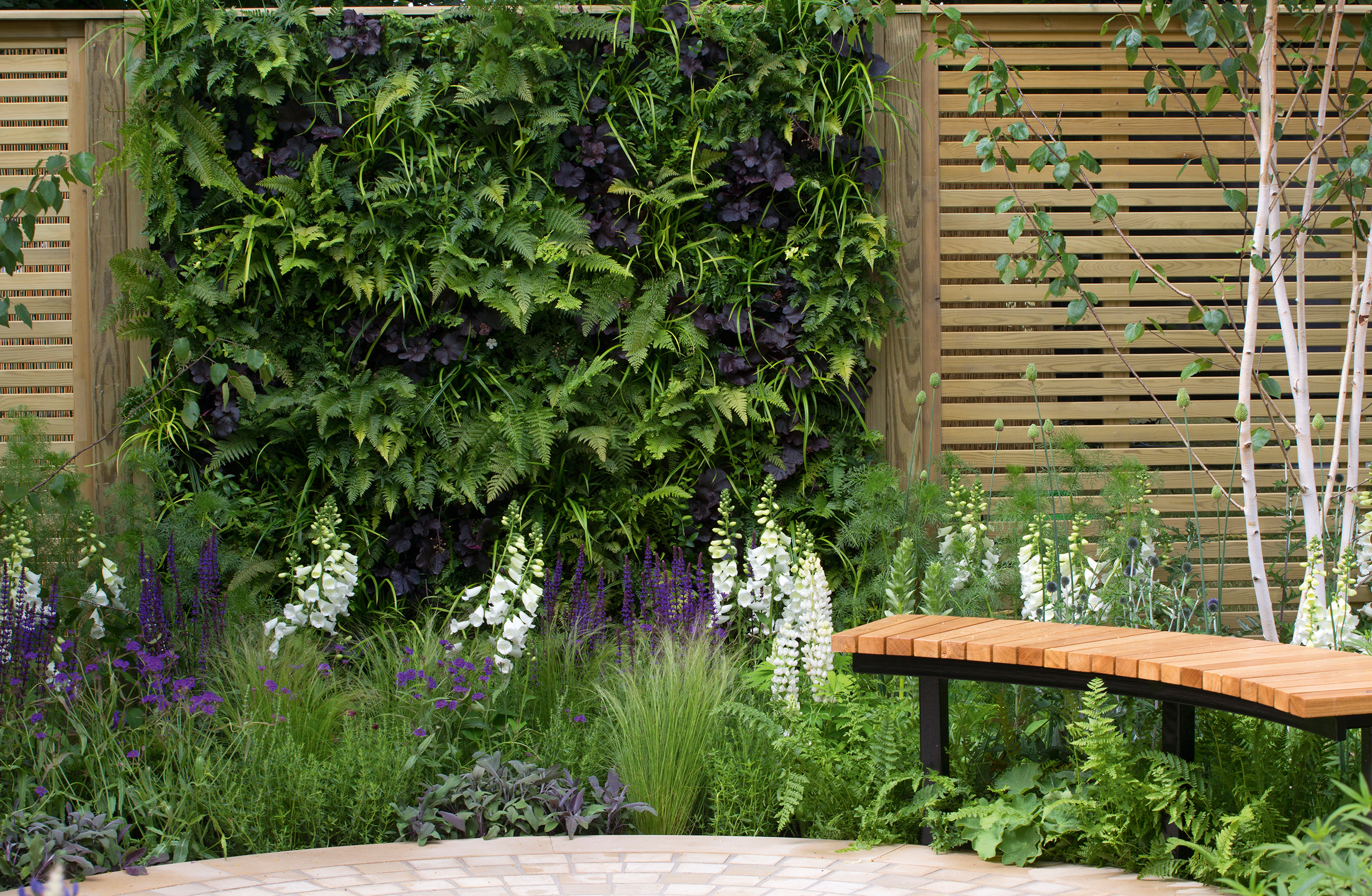
A hydroponic system panel allows the ferns, huecheras and grasses to appear to be growing wildly up the fence, echoing the soft fringe planting of stipa and foxgloves
Installing a fully flourished living wall is the number one small garden idea. This clever look mimics the effect of climbing plants for a wild and beautiful finish.
2. Use climbers to conceal a wall

Choose hardy climbers like ivy, passionflower, and jasmine for quick growth up and over an unsightly wall.
3. DIY a pallet vertical garden space

Whether you've recently been doing a spot of garden landscaping or not, it's easy to get hold of pallets to start a statement vertical garden. Choose a mixture of trailing plants and florals for a full on effect and heaps of fragrance.
4. Can it by upcycling
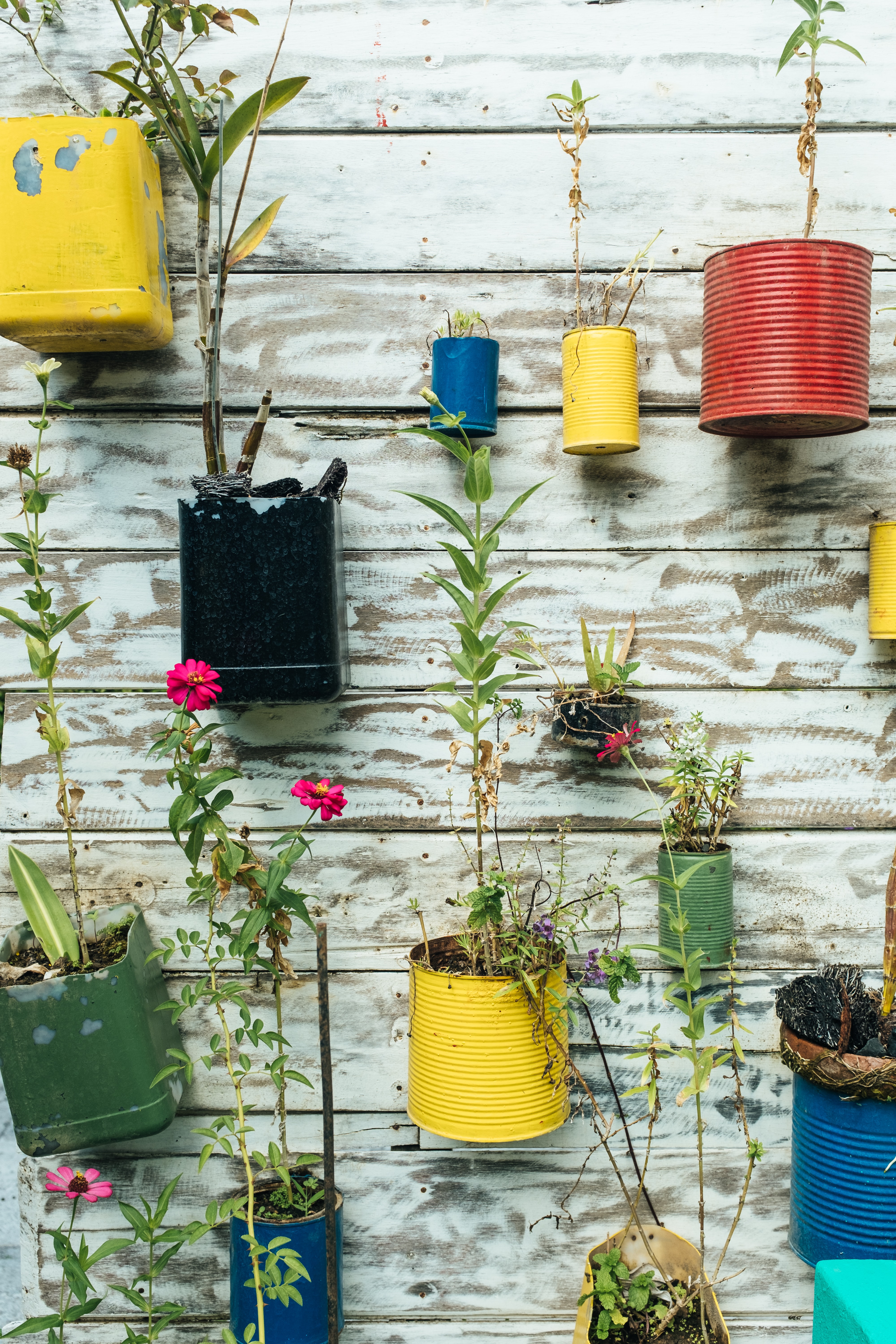
If you're looking for a winning budget garden idea, don't be throwing those empty cans away. A little spray paint, string, and savoir-faire will recycle these nicely to make them part of a jazzy vertical garden for hardly any money at all.
5. Make yours edible
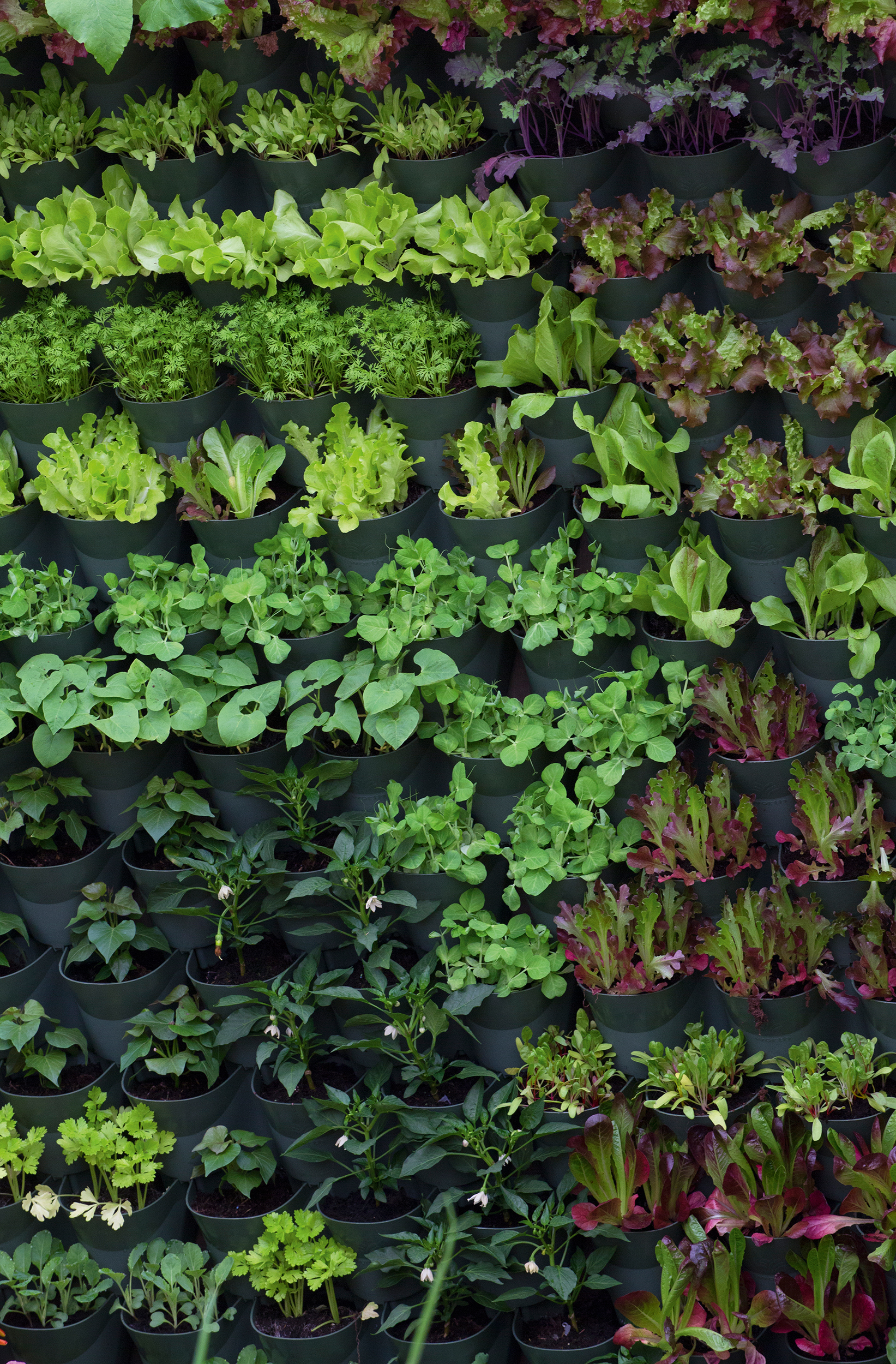
A great idea for vertical gardens is growing edibles in pockets and container systems. They take up less space and are easy to harvest and maintain. If you can already get a harvest from container gardens, vertical gardens should be no problem.
6. Use the ceiling of your garden rooms
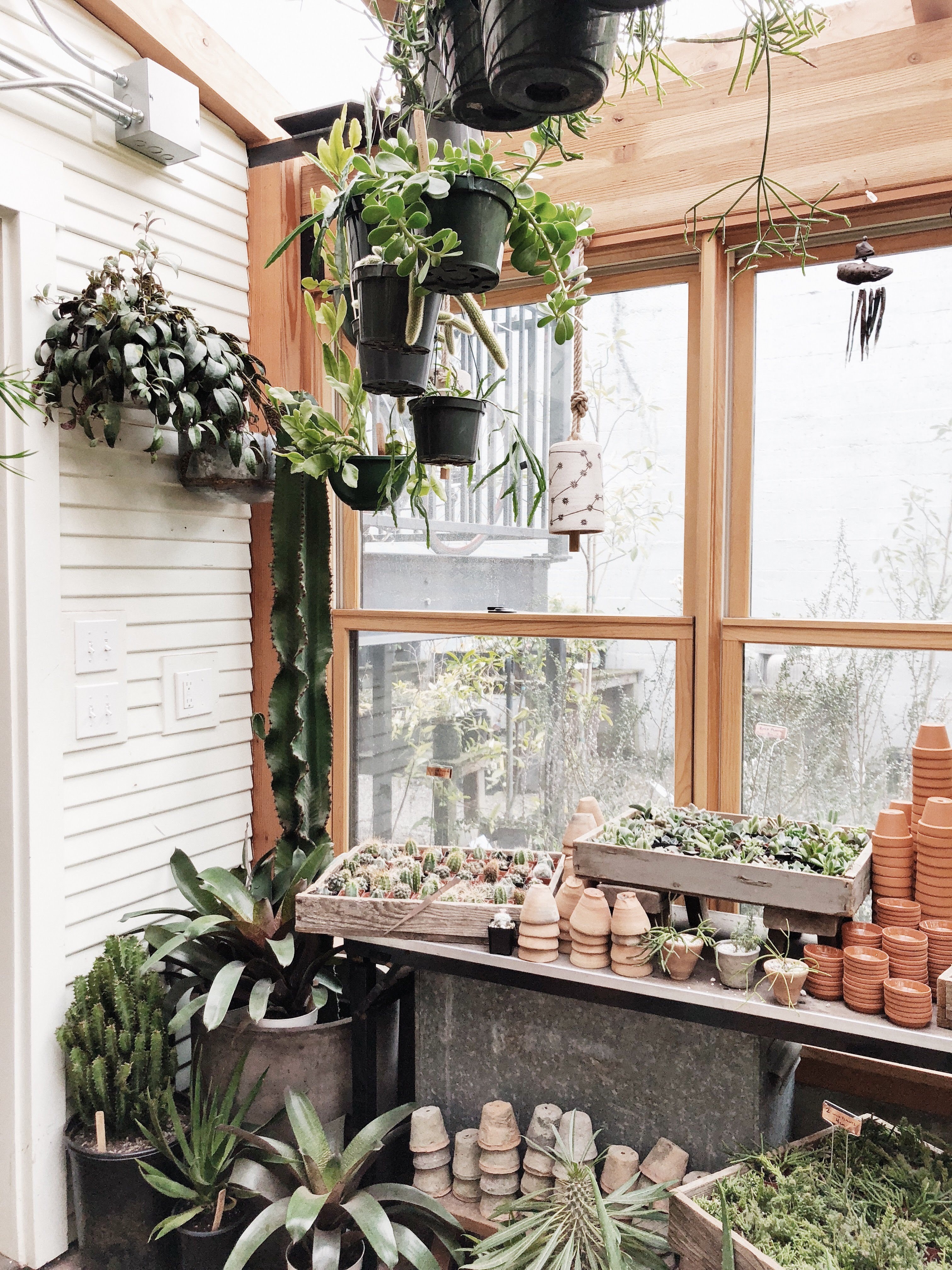
Garden rooms are there to be beautiful and practical too, if yours is small but needs a little more greenery to help the inside better reflect the view outdoors, hoist your vertical garden up and let those plants dangle down from the ceiling. It's a really simple but gorgeous garden room idea.
7. Let yours double up as garden screening

Growing vertically is one of the most natural garden screening ideas around. Keep yours both practical and beautiful by maxing out on drama with big evergreens. The silver foliage of Lamium lifts the green hues from ferns in this soil-based system living wall designed by Kate Gould.
8. Plant up a ladder
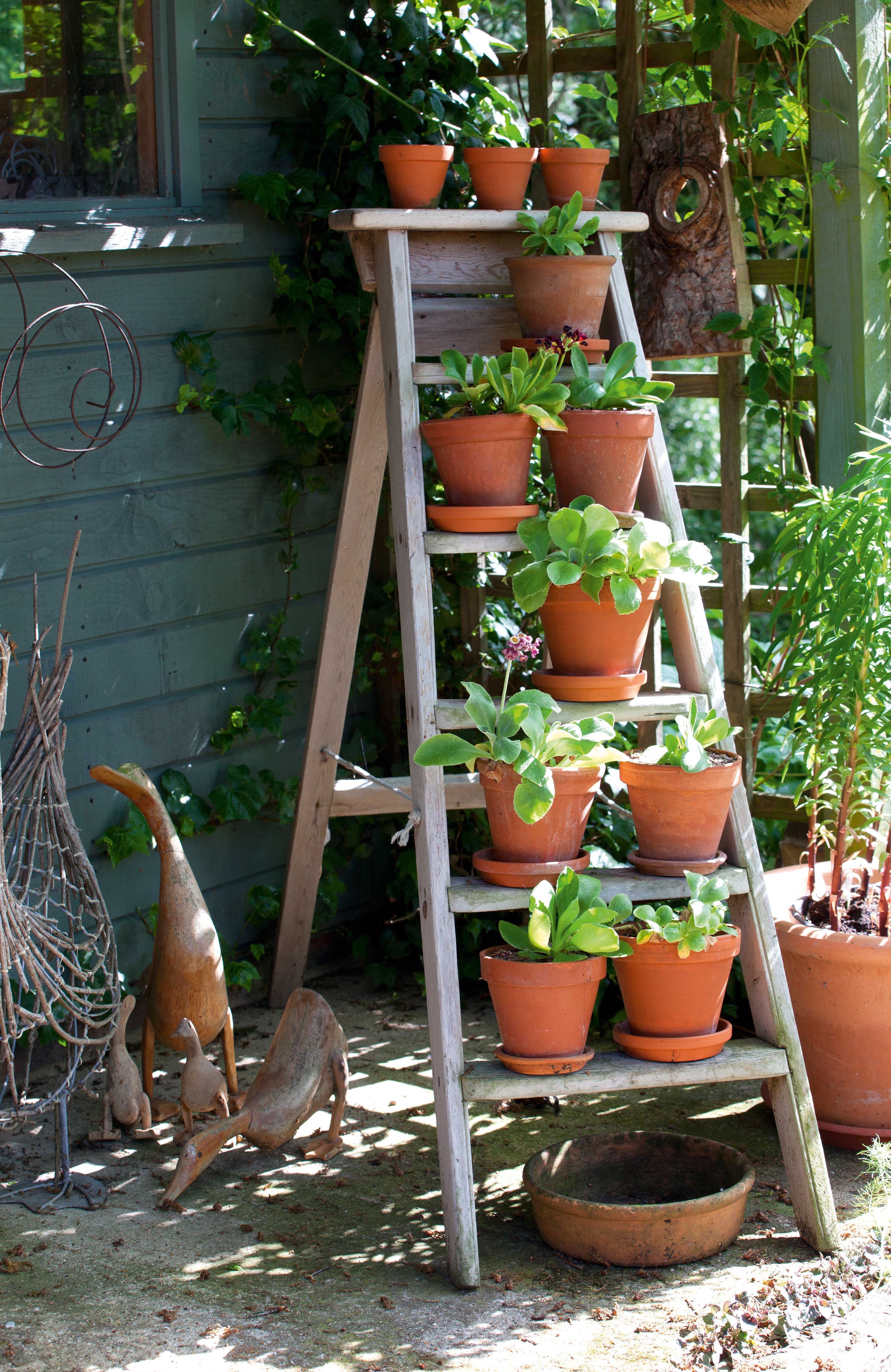
The options are many for creative vertical planting, Redundant shelving or an old ladder can find a new purpose in the garden
Vertical gardens take a more traditional approach, using everything from one or more of these pergola ideas to containers to use the vertical plane within the garden. So we love the idea of using old ladder space for a rustic display.
9. Plant up your balcony
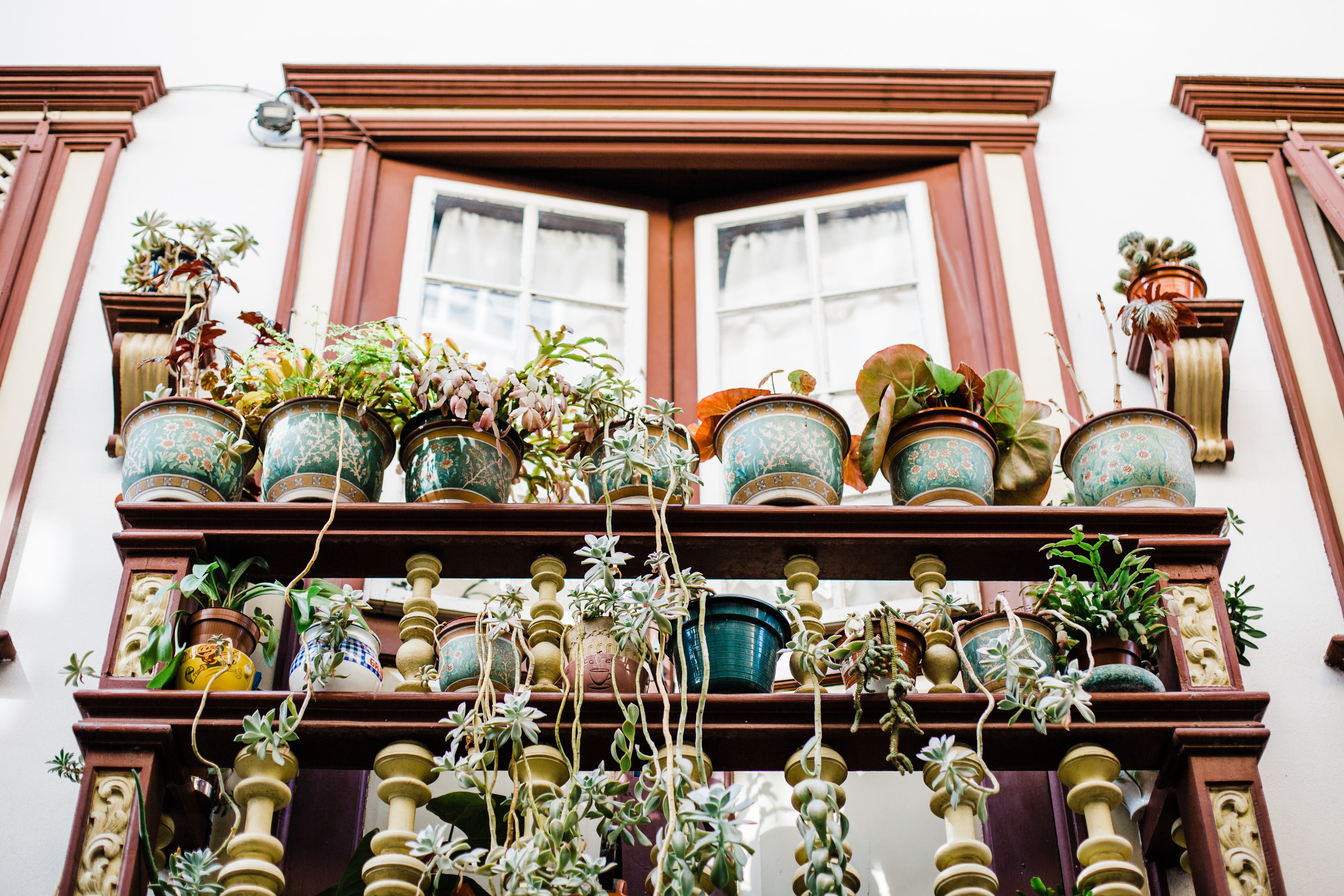
The best balcony ideas combine space saving functionality and beauty. Use the different levels of your railing for a multidimensional display and you'll be sure to impress any passerby too.
10. Line your greenhouse
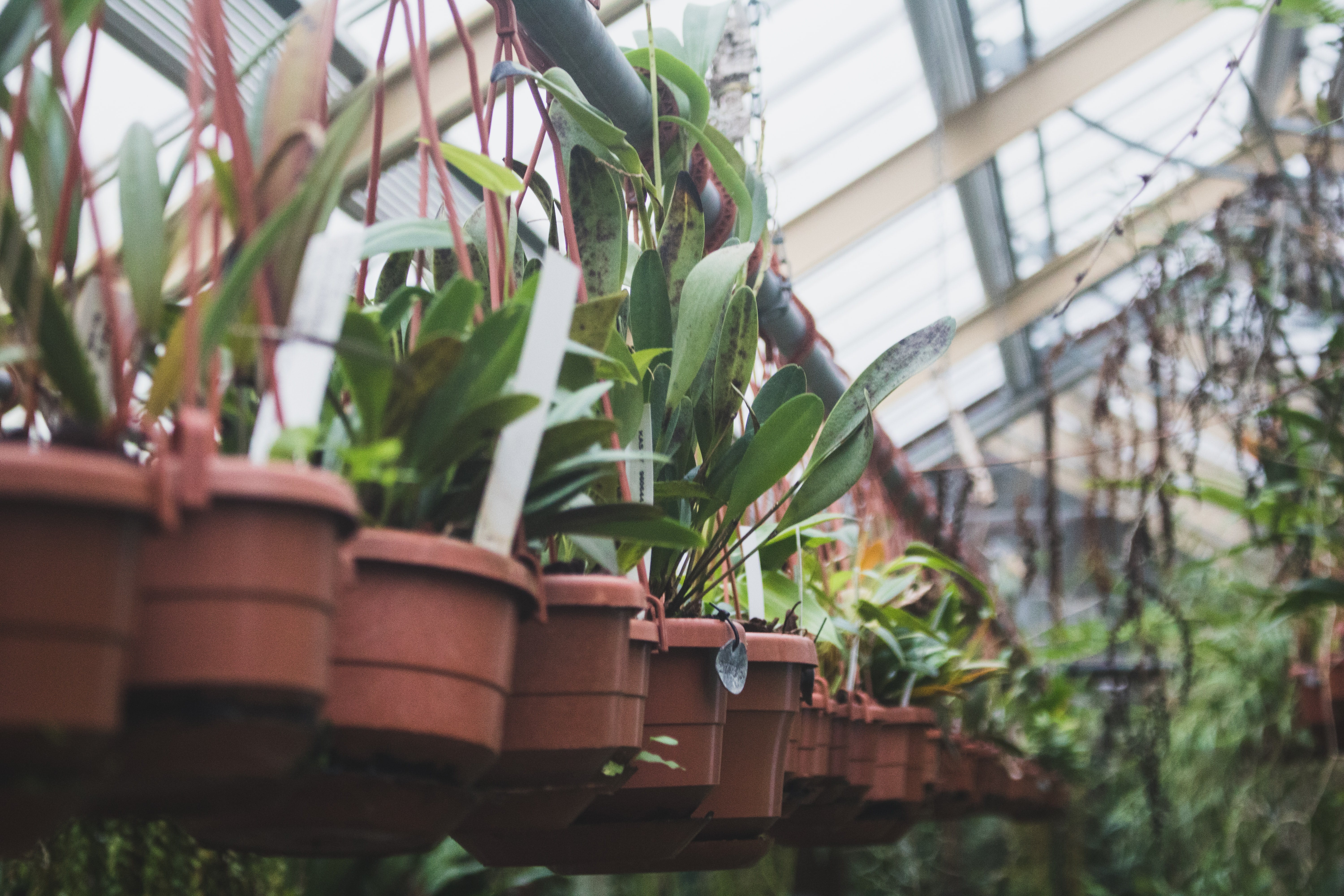
A full and thriving greenhouse is what it's all about. Keep yours busy with genius DIY greenhouse ideas, like using sidewalls and ceiling space again from which to grow and display your vertical garden.
11. Mix it up with a pergola
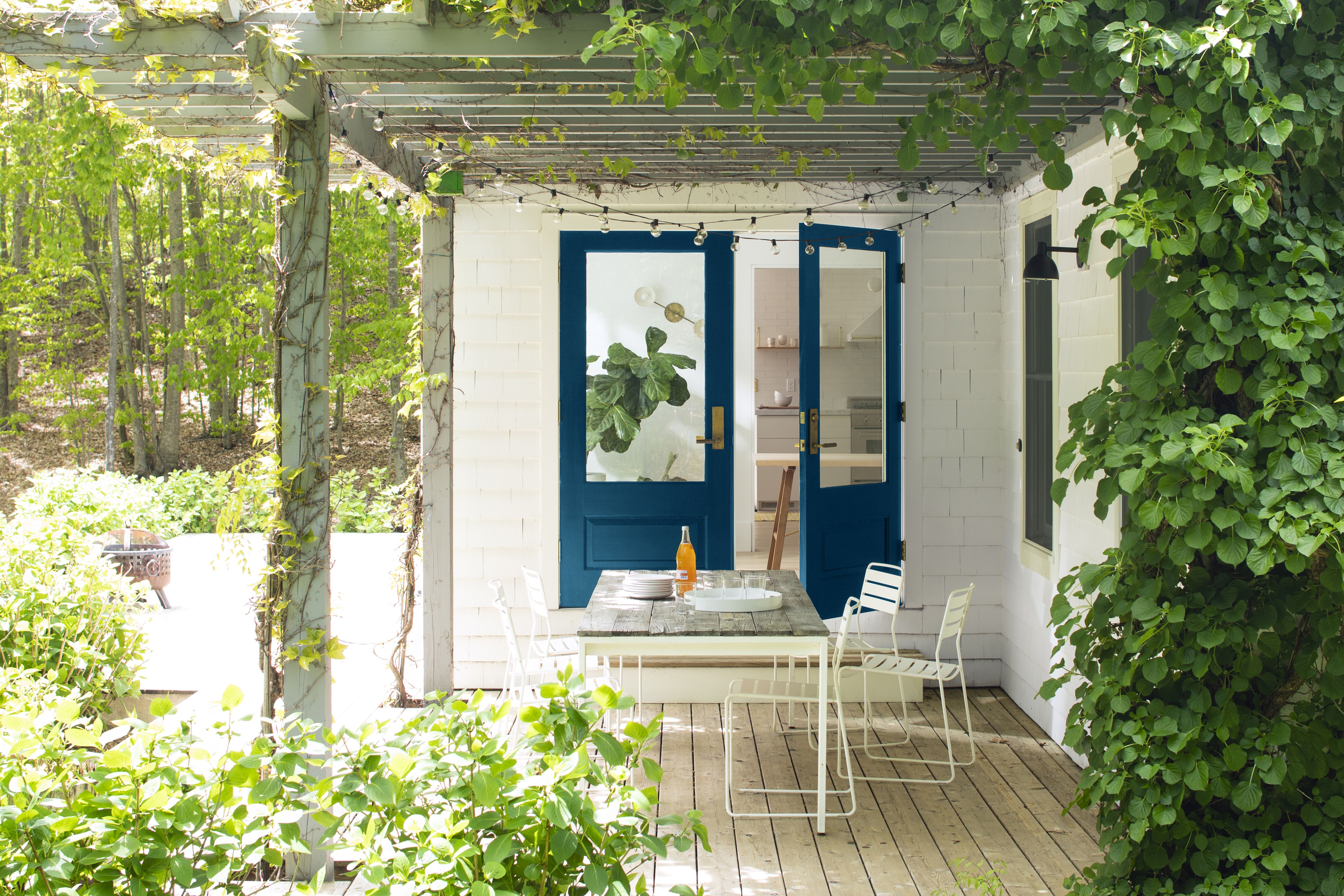
Your walls and fences can become an attraction in themselves through paint techniques, planting schemes, creative materials, or adornments.
Pergolas, screens, and hedges also offer further opportunities for your creativity, from a recycled old bed frame – perhaps to support plants and screen an area – to a tapestry of a mixed shrub hedging.
So add some drama to your outdoor living space by growing up your pergola.
12. Embrace hanging baskets
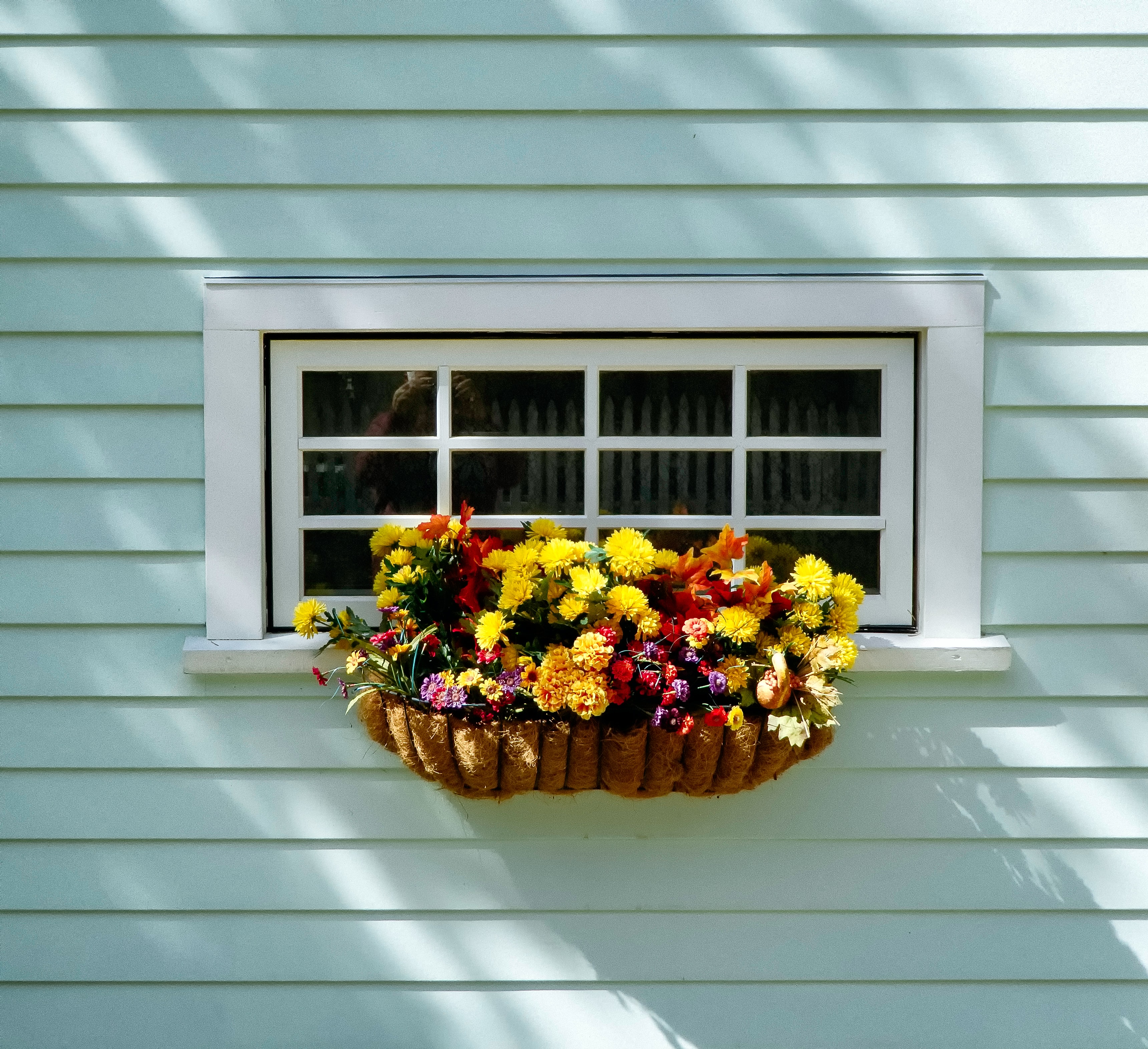
Hanging baskets needn't be boring and they are one of the simplest tools to get a vertical garden blooming. Another super easy way to include vertical interest, you can try containers on windowsills, balconies or along walls too.
13. Grow a tiered herb garden
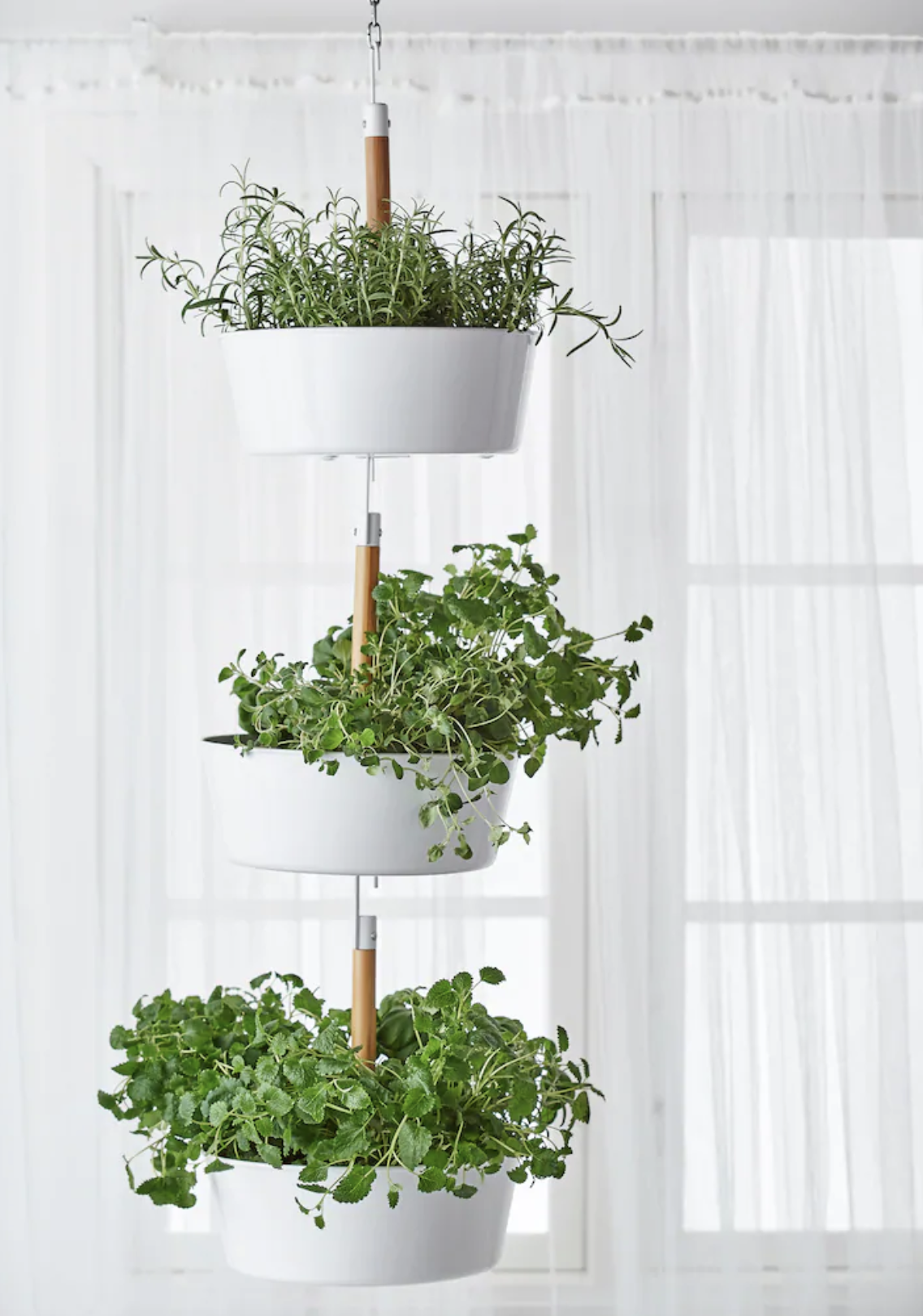
Vertical and indoor gardening go hand in hand so don't feel limited to just using your outdoor space. Grow herbs upwards for a cute and tasty display no matter where you hang this little masterpiece.
- Start a herb garden with our help.
14. Interrupt your trellis
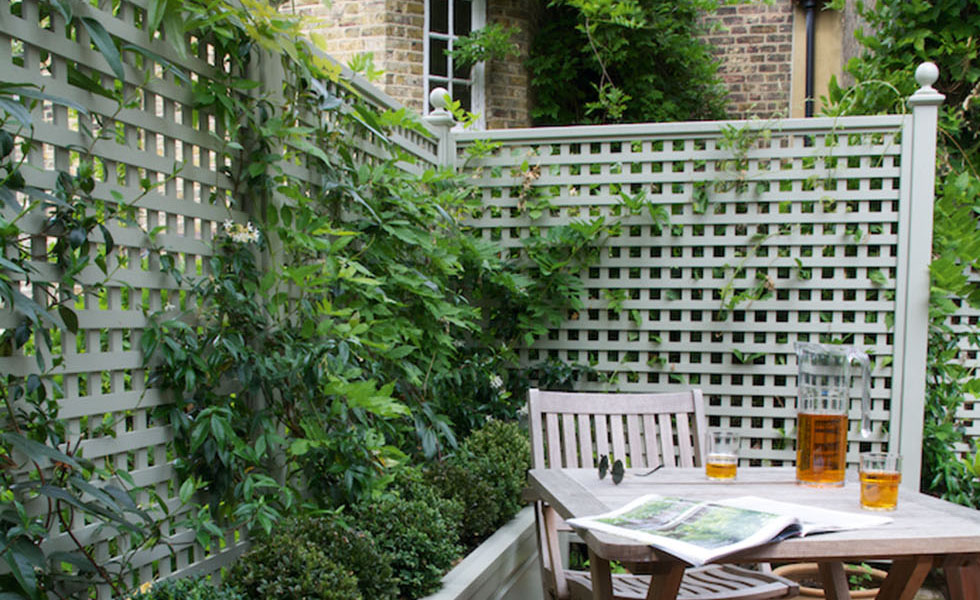
Growing up a trellis that frames a seating or outdoor dining area is a great visual and a natural way to zone your garden space decoratively too. Take a look at these winning trellis ideas for more inspiration.
15. Make a vertical succulent frame
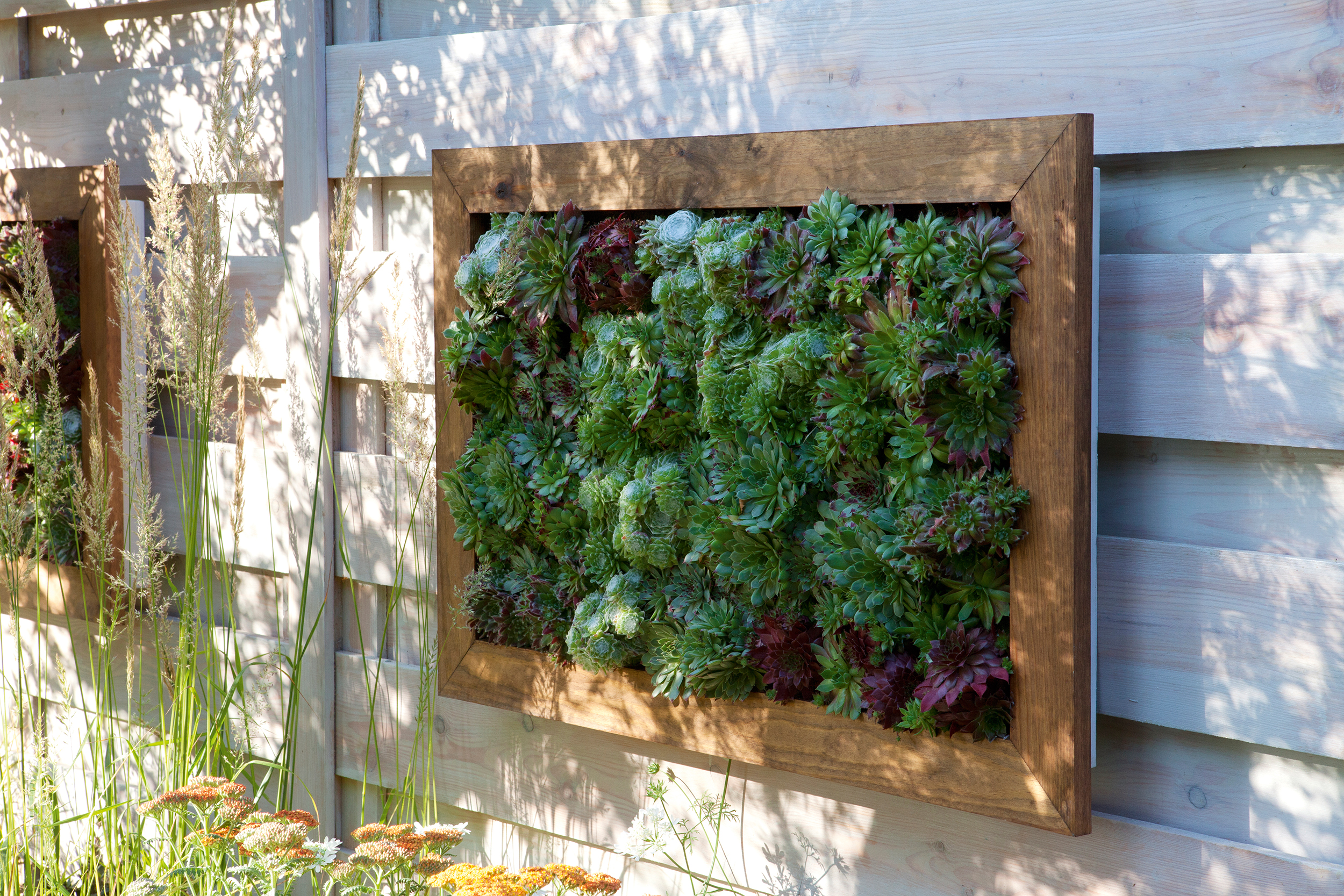
Plant your own growing art in a picture frame, we love this vertical succulent garden for a focal point like no other.
16. Level up your planter display
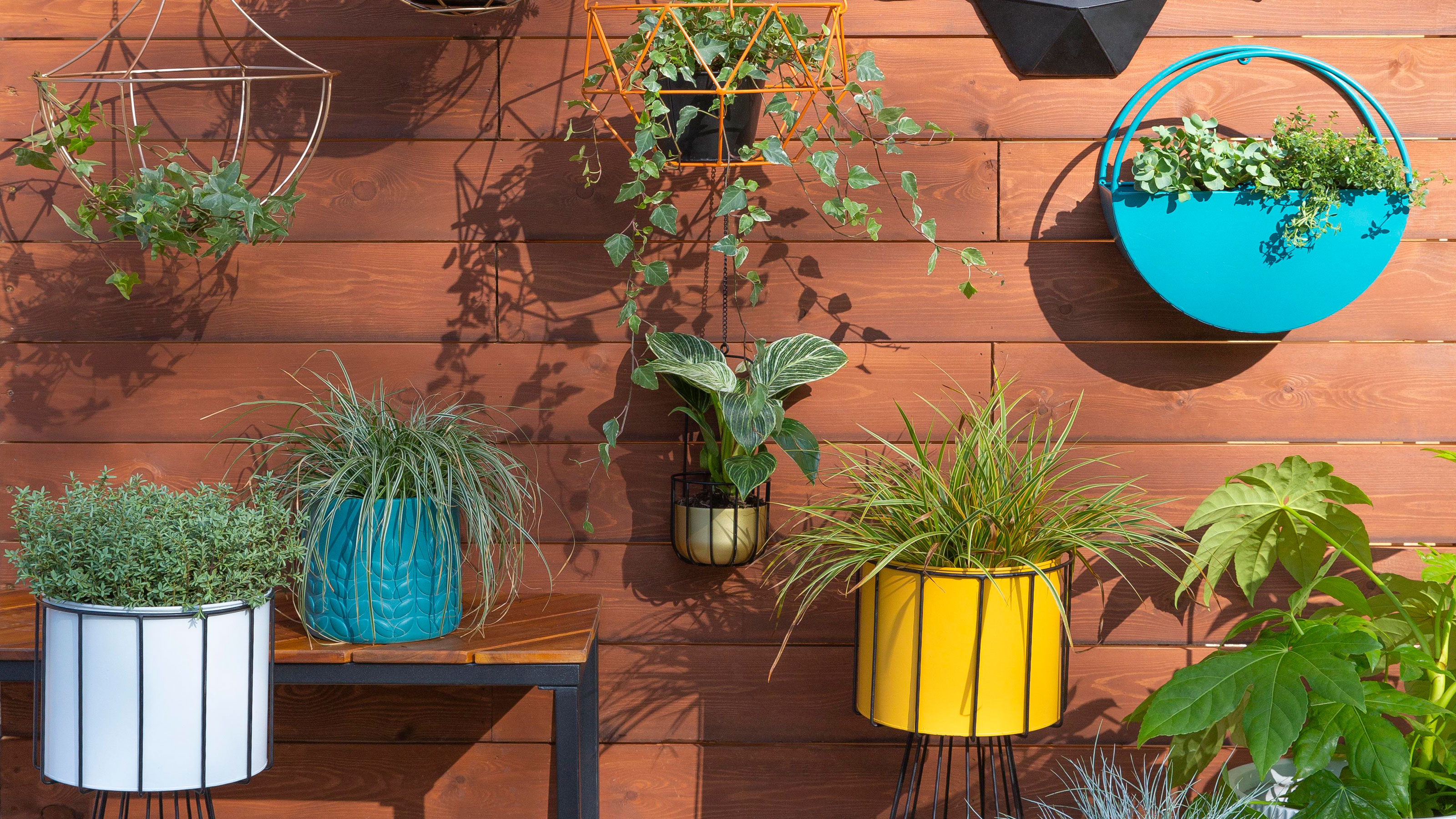
Not sure what to do with your DIY hanging planters or cheap buys from 10 summers ago? Play with levels using garden tables and attach some to a free, sturdy garden wall for an eclectic display.
17. Train yours over an archway
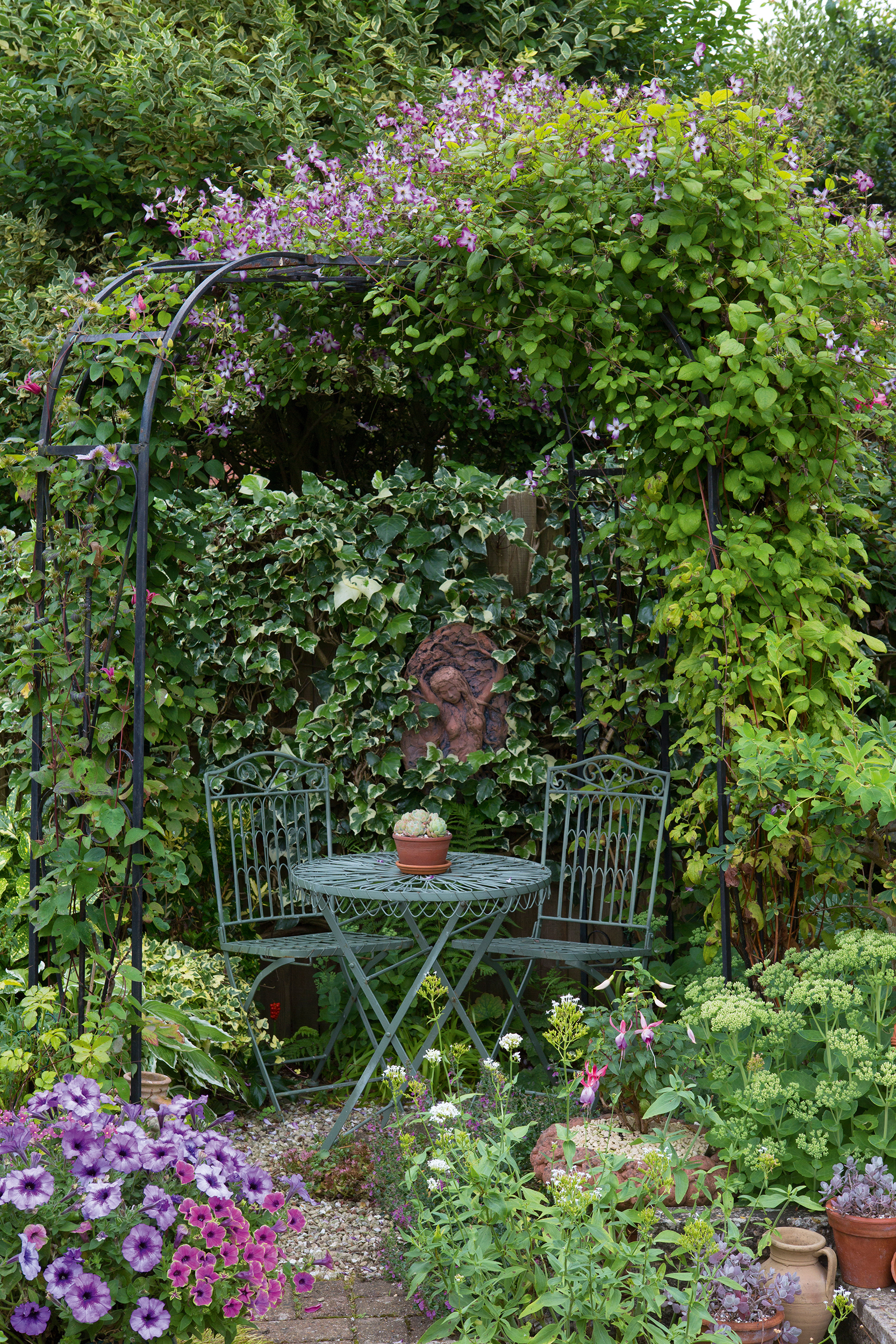
Tunnels, arbours, pergolas and arches are classic ways to accent the vertical plane
The vertical plane is the longest axis in the garden, and there are other ways to use this often forgotten space. For millennia we have used climbing plants as the best garden plant choices to green a surface or espaliered fruit against a warm wall.
Arbours, arches, tunnels, trellises, and pergolas can become lovely focal points adorned in profusely flowering roses entwined with clematis. We love how romantic this archway is, perfectly framing what is actually a tiny seating area.
18. Mini statue planters
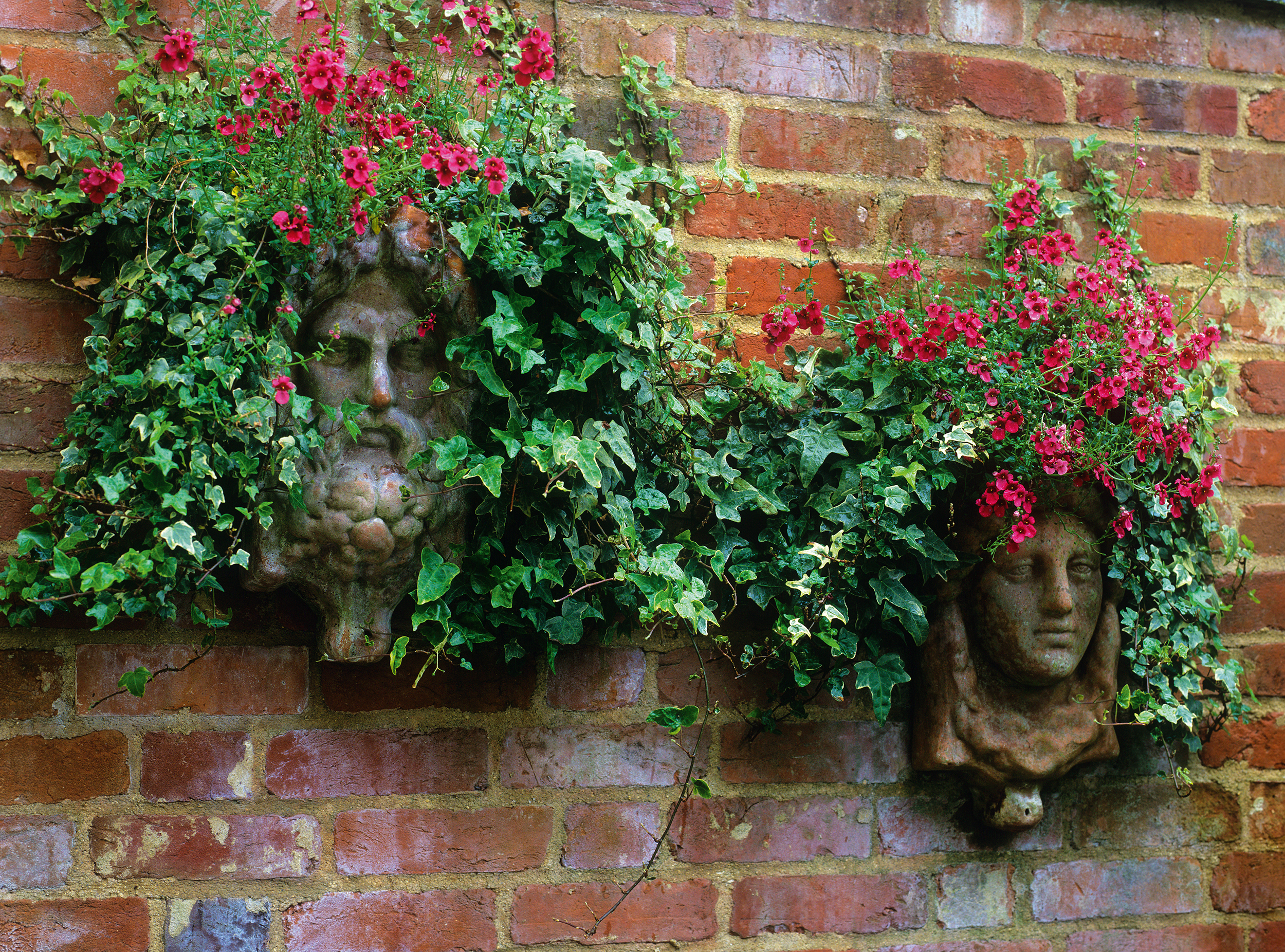
At its simplest, a vertical garden is just a container or containers full of soil with drainage holes and a spot on the wall in the sun, the more characterful the better. And of course a fabulous way to add a burst of color.
19. Trio of clay pots
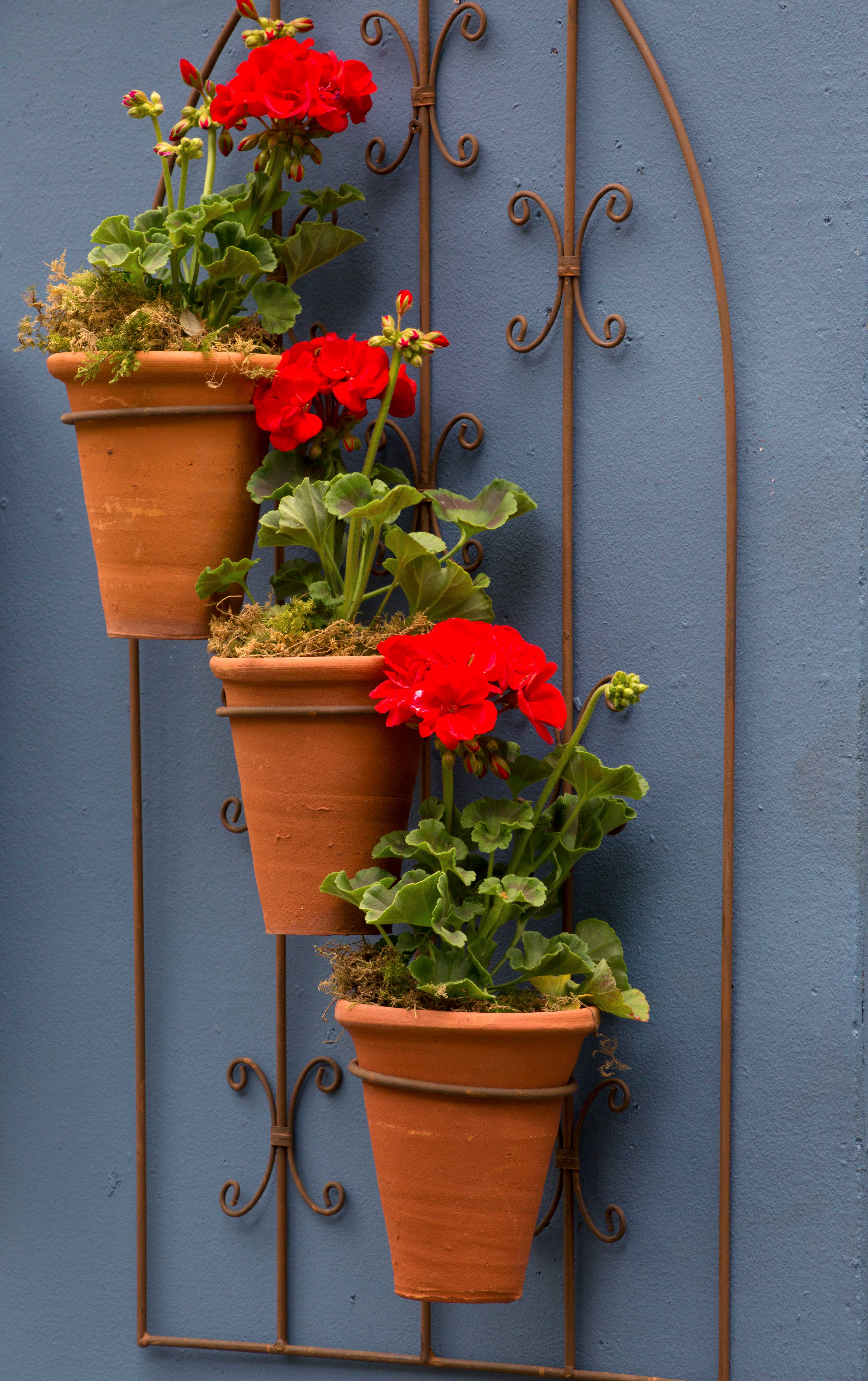
When you start taking notice of the vertical element all kinds of ideas come to mind to draw the eye up with eclectic arrangements. The power of three is a thing even in gardening...
20. Use an obelisk to support your climbers
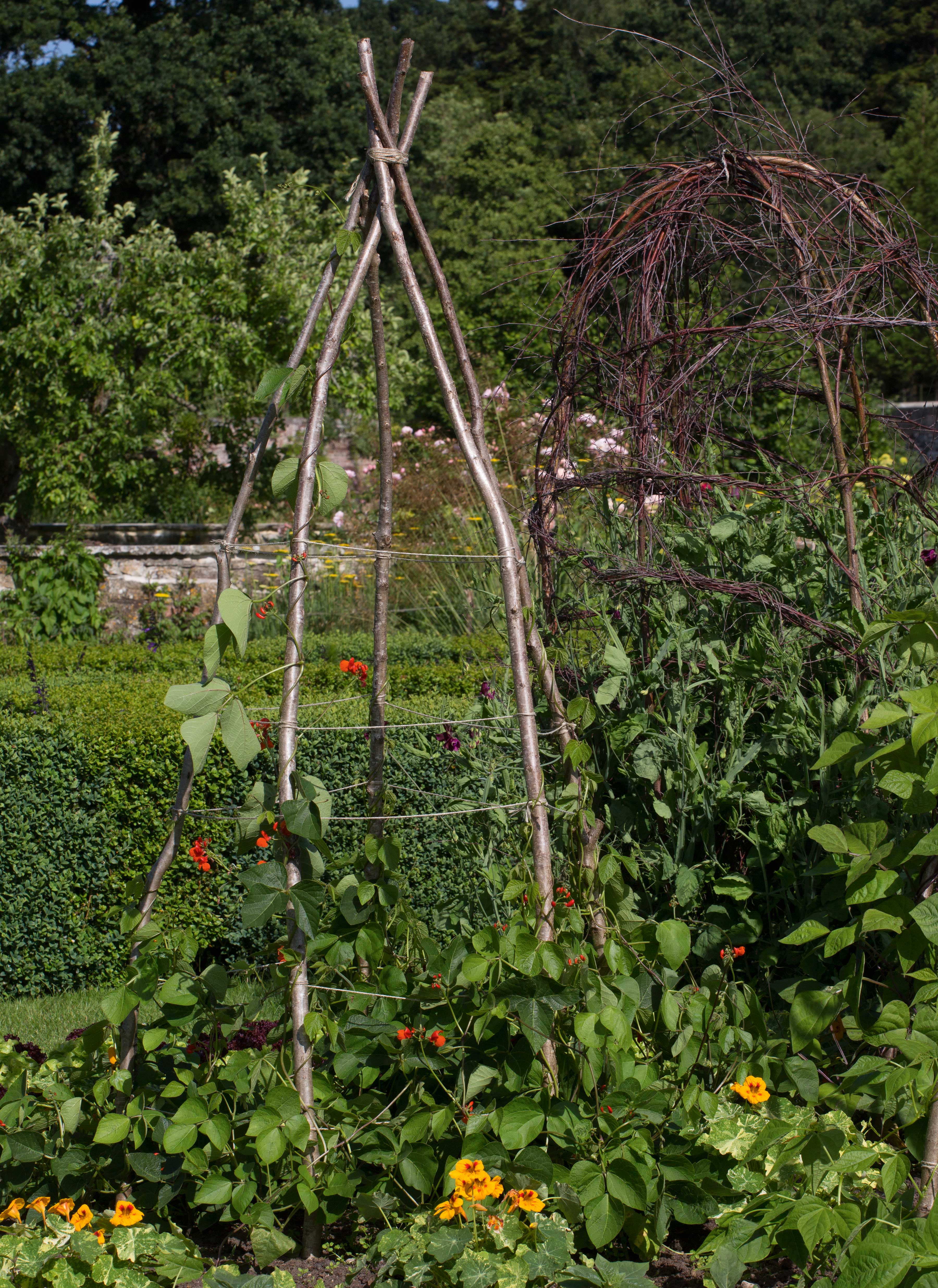
Obelisks draw the eye up and are a great frame for plants to climb
Tripod structures have long been a valuable tool in the garden to add vertical punctuation points and support plants. A splash of paint will transform them into something special.
Once you really look at the vertical axis you may be surprised at just how much you can achieve to complete your garden’s vision. So look up, and grow up.
21. Create a pretty cottage garden display with a trad trellis
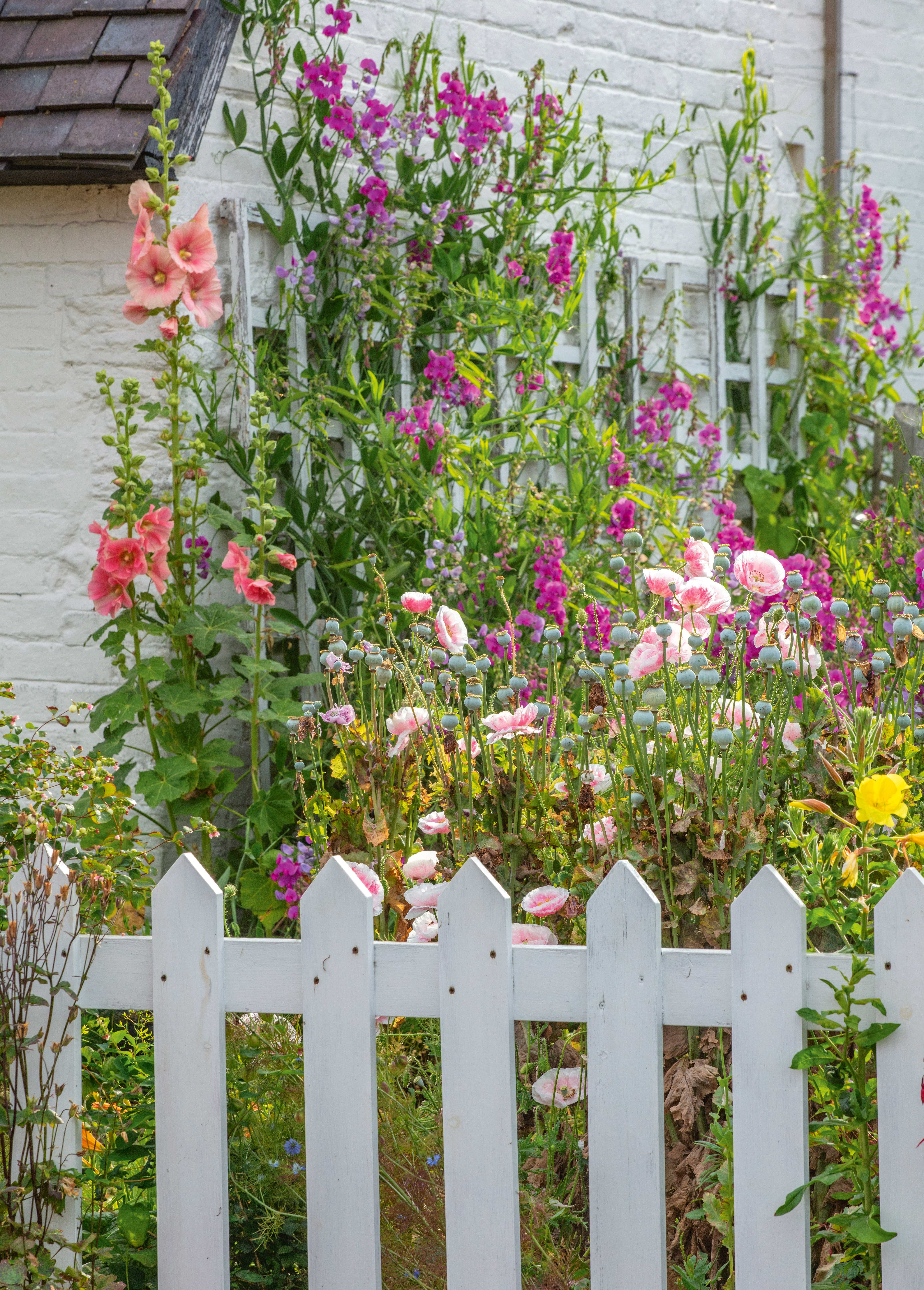
Adding a trellis is another way to encourage climbing plants to cover the wall
Using cottage garden plants to brighten up a plain white trellis is a fine vertical gardening idea for period and modern homes. The bees will love it too.
22. For a larger space go up with stone steps
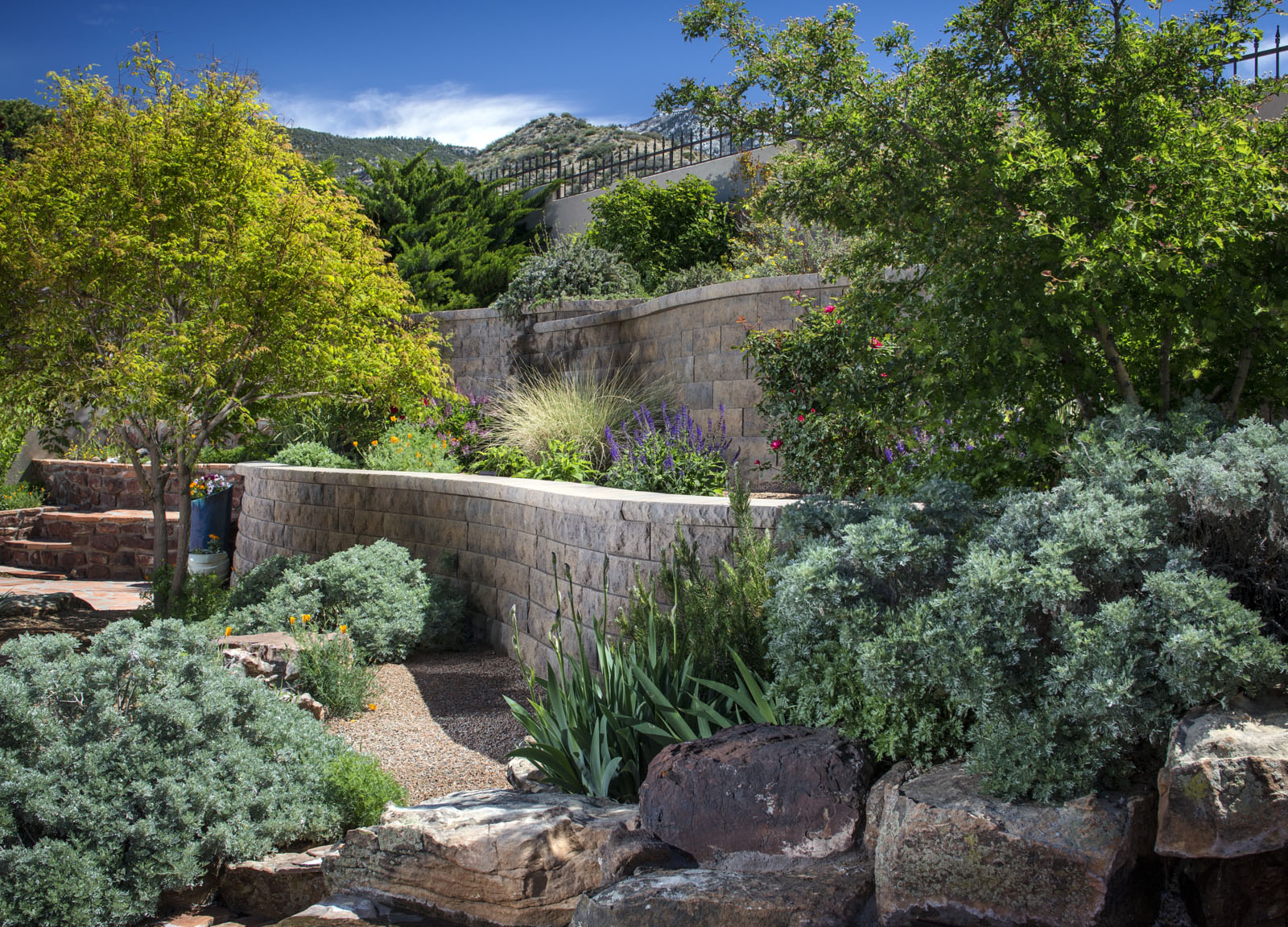
‘Vertical gardens are well suited for micro garden spaces where options are limited. In urban areas, clever design ideas are key to make the most of the space,’ says Joe Raboine, director of residential hardscapes at Belgard.
You can create extra levels by having a stepped area where you can plant a variety of foliage and flowers on each level.
23. Utilize your balcony ceiling
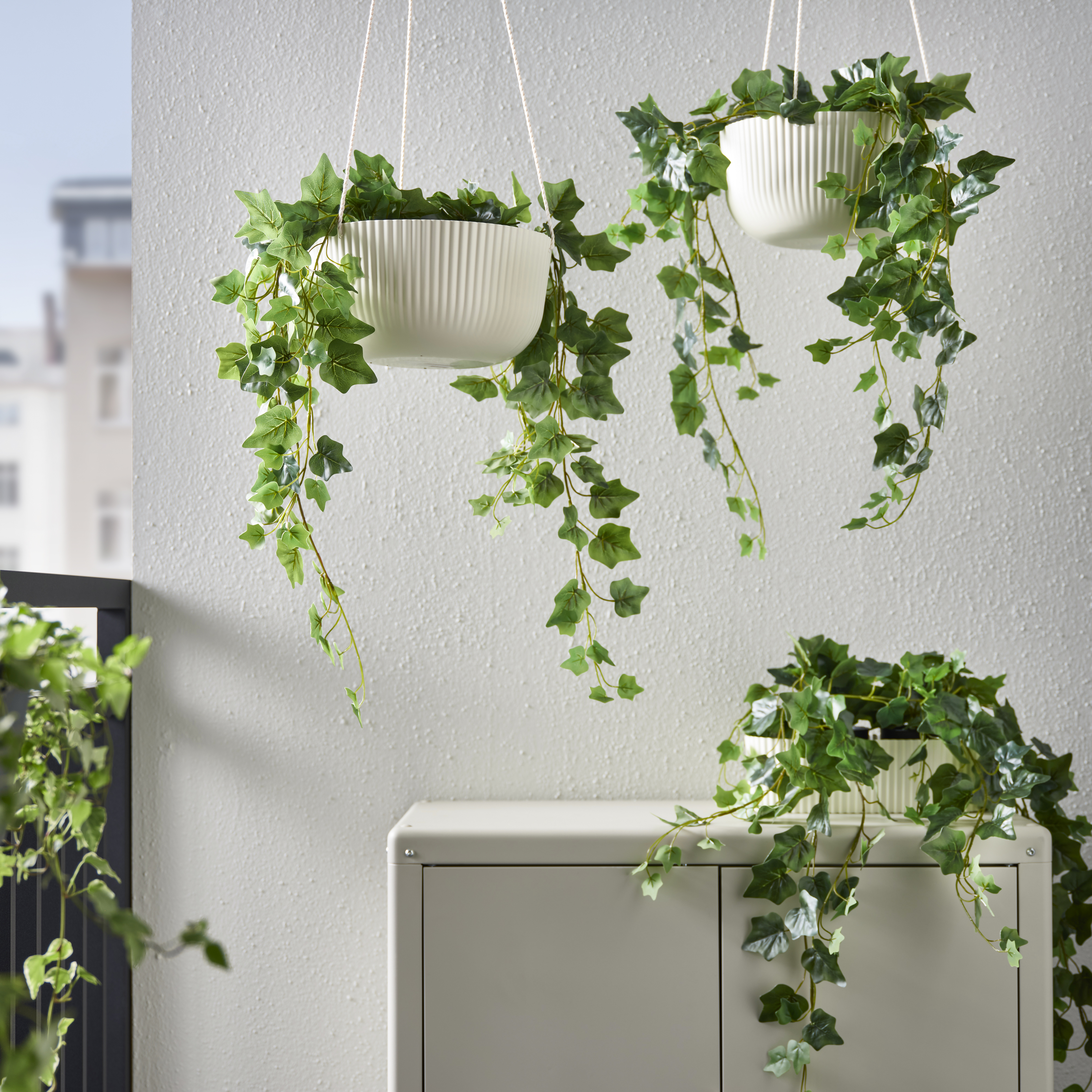
Make sure you use every inch of space – even a balcony ceiling can have baskets hanging from it and we love Ikea’s Äppelros idea of filling them full of ivy that will naturally hang down.
Trailing plants are a great option because they will add instant length and interest to a blank space.
24. Opt for a slimline stand for small space
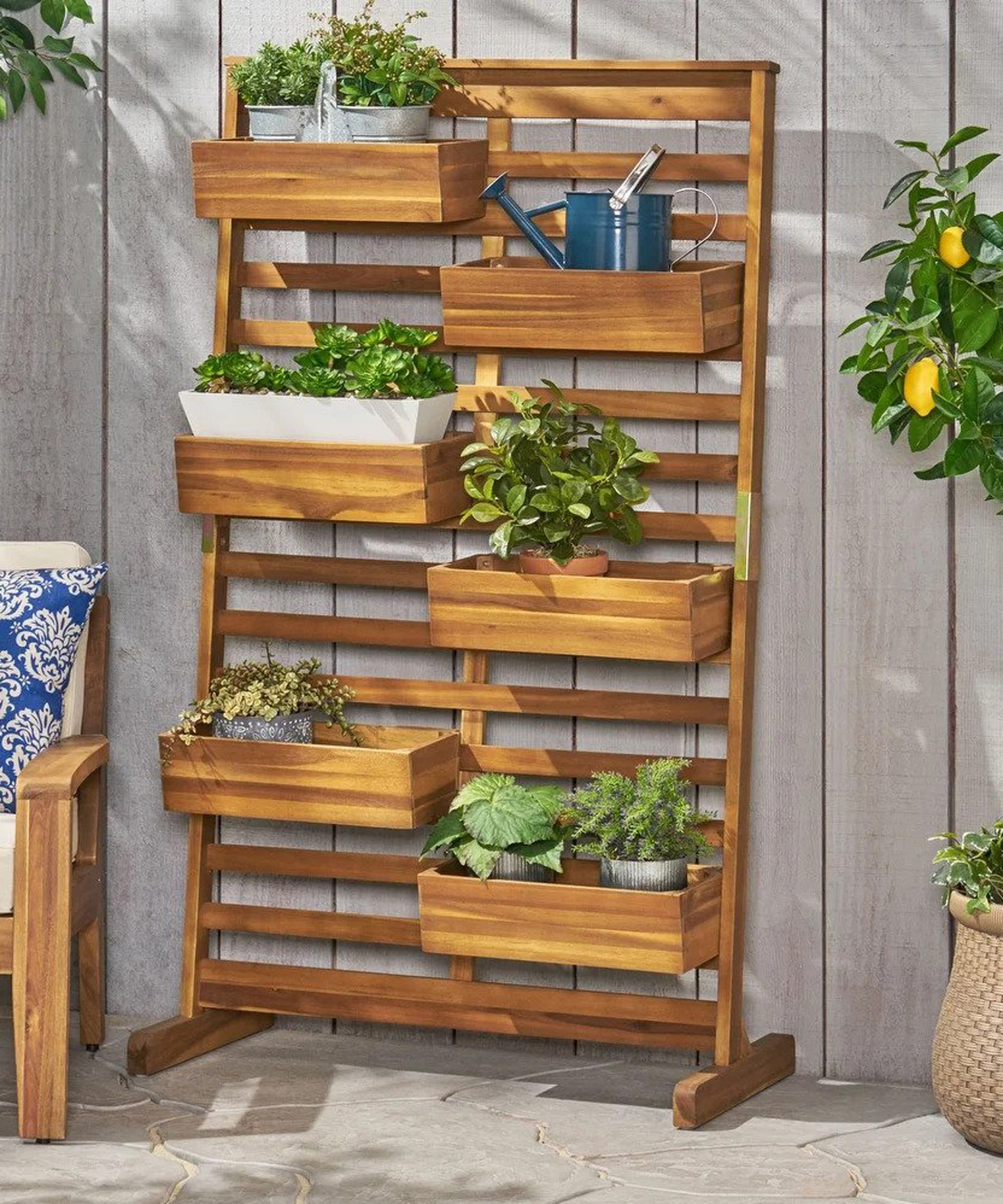
Designed for herbs – but you could use it for any plants, a wooden stand like this one from Bed, Bath & Beyondis ideal for backyards or a garden that’s small. You could even have a row of them side by side to create a proper ‘wall’.
25. Be resourceful – there are many ways to DIY a vertical frame
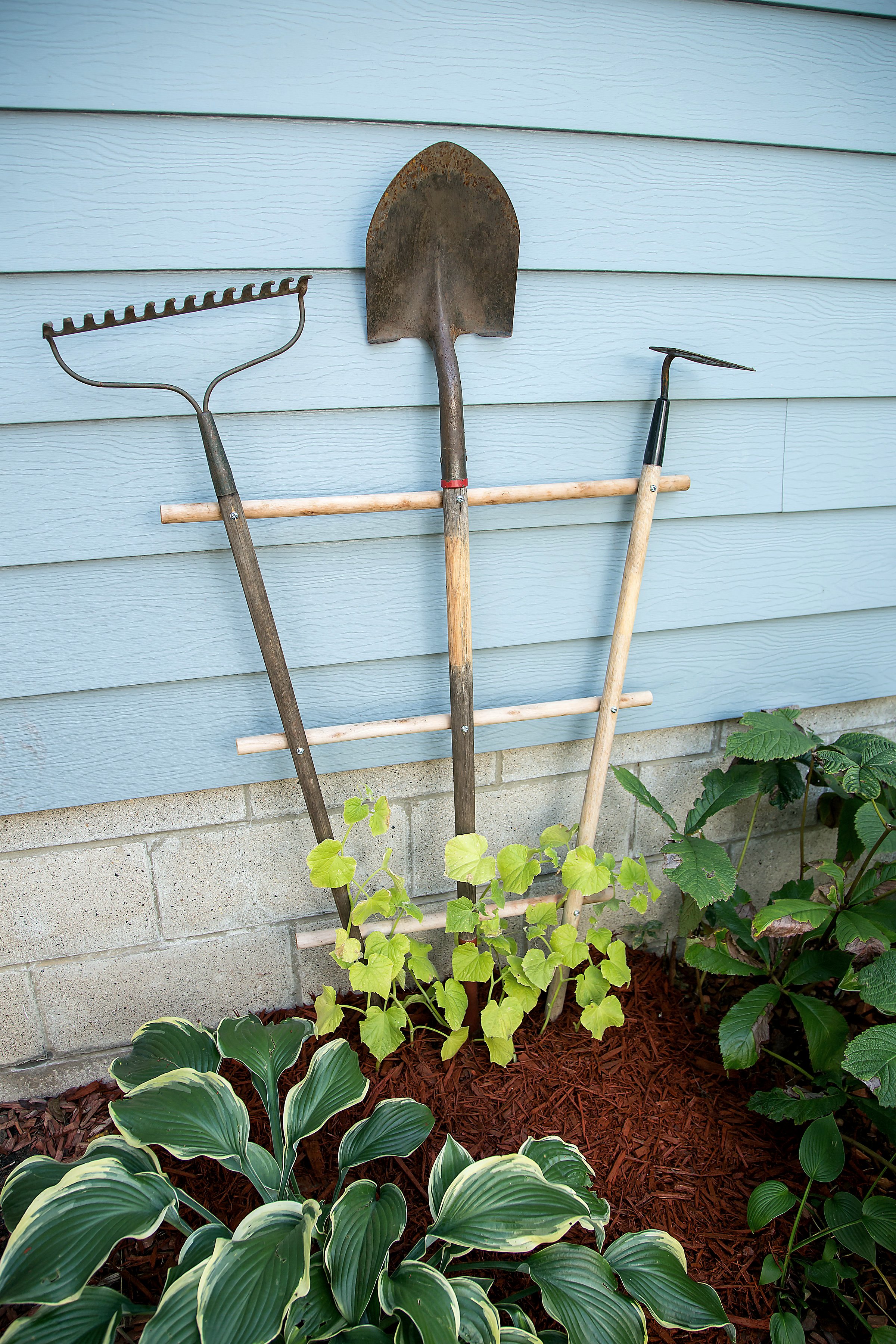
Amy Andrychowicz, gardening expert and author of Vertical Vegetables: Simple Projects that Deliver More Yield in Less Space, and founder of Get Busy Gardening, made this clever frame from unused garden tools.
‘This upcycled garden tool fan trellis puts a fun twist on a classic vertical garden design, and gives old rusty or broken tools new life. Not only would it be a cute addition to any garden, it’s a great conversation starter too,’ says Amy.
26. Create a corner with vertical screens
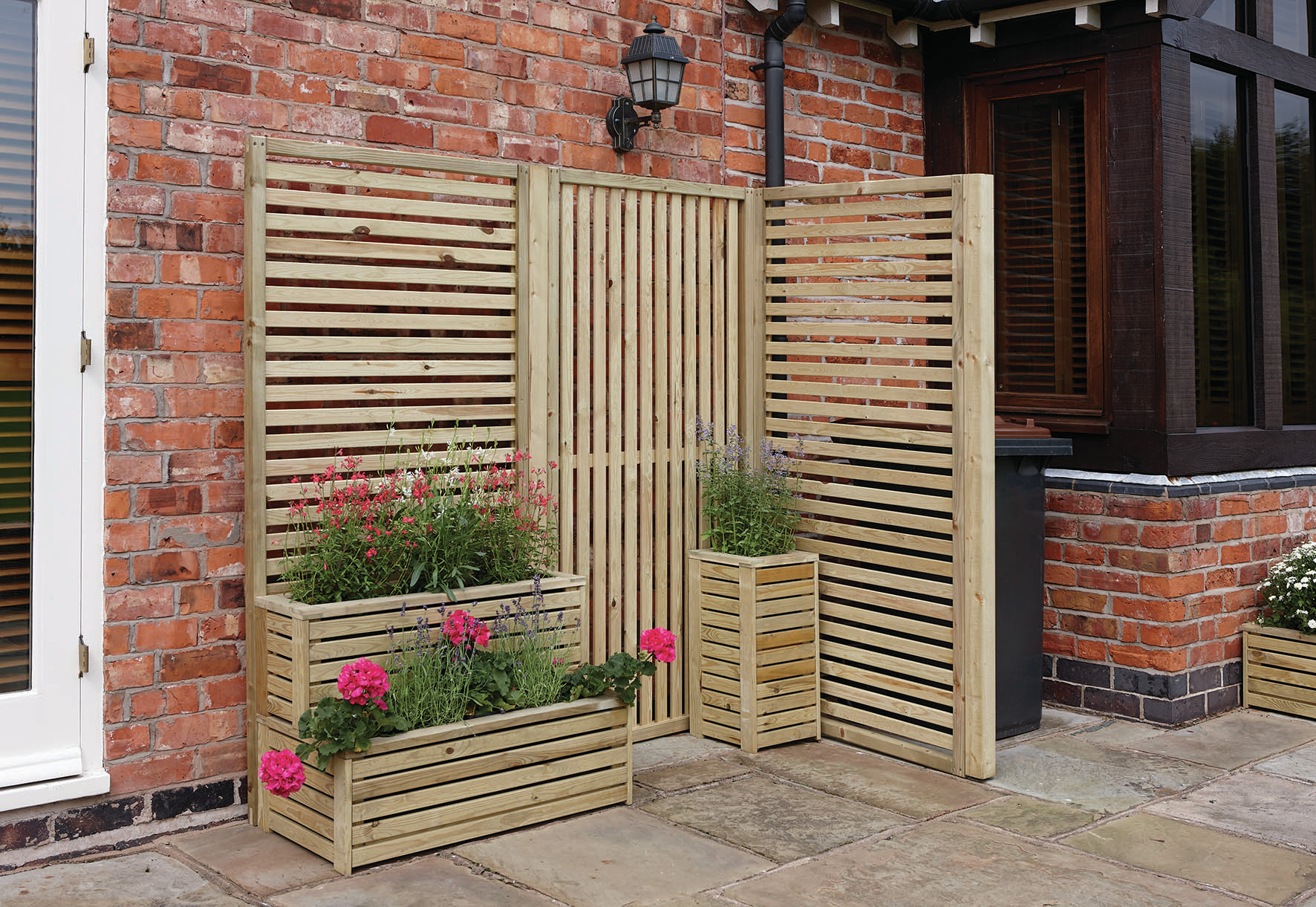
Create a vertical nook in your backyard with these vertical slat garden screens from Cuckooland. As well as providing a frame for climbers to navigate as they grow, they will also let in light. They come in pairs or as a four so you can use them to zone a specific area in your garden that could include seats.
27. A planter can become ‘vertical’ by adding a trellis
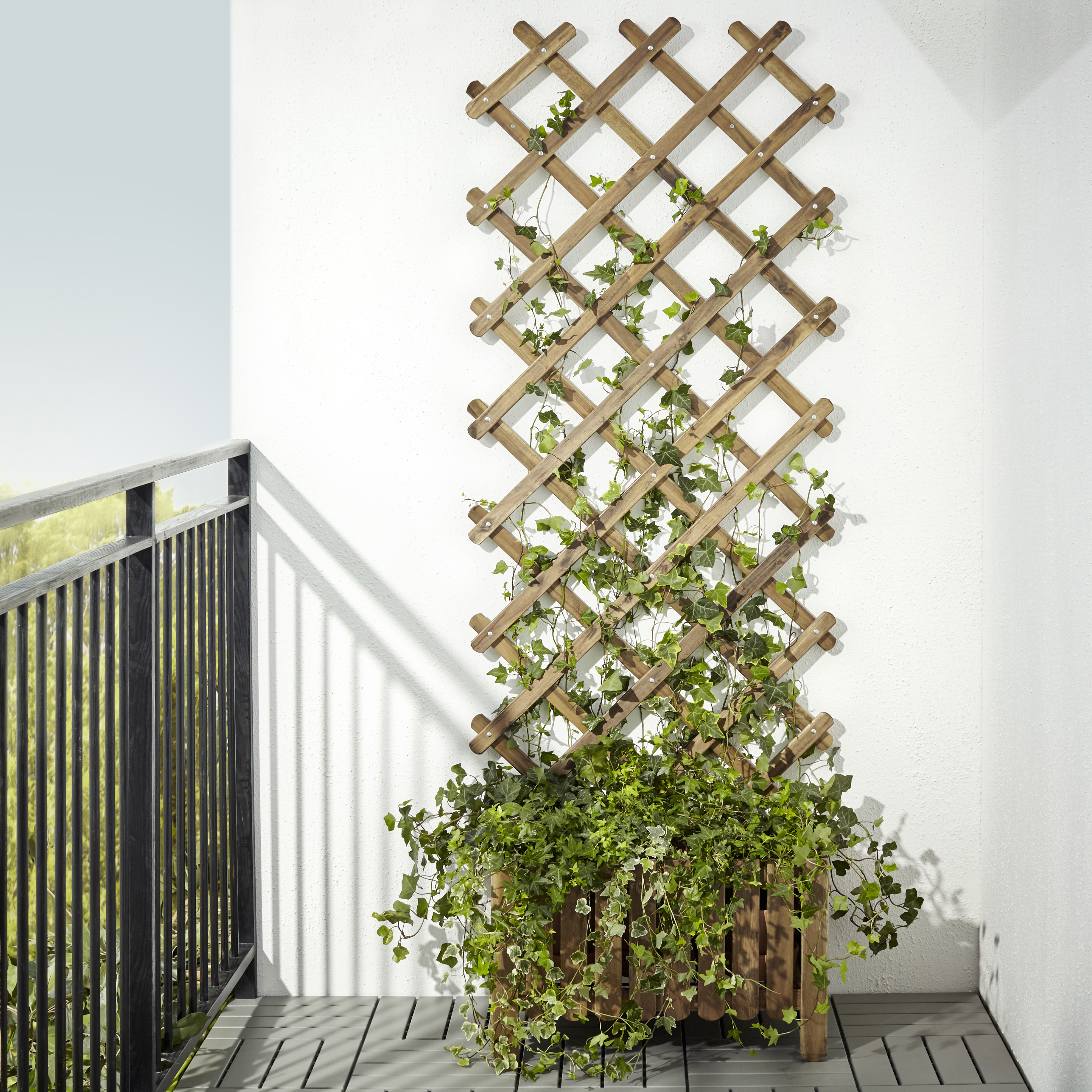
Front porches are a good place to start your vertical garden – you can encourage growth by adding a trellis behind existing pots and planters. Ikea's Askholm trellis can be hung vertically or horizontally, this is a great idea if you want to create a ‘living’ wall.
28. Make the most of your wall space
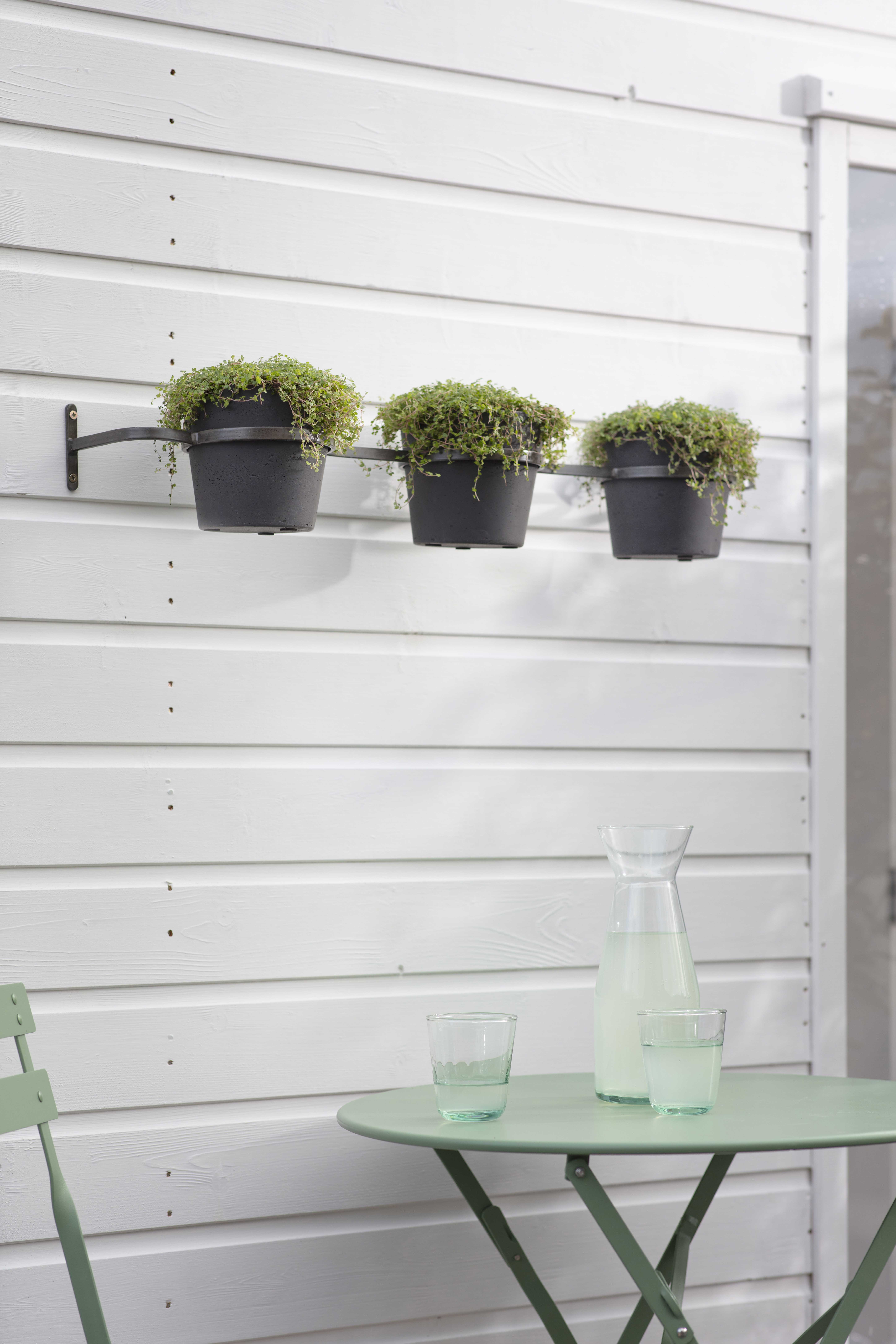
If you don’t want to cover your wall in climbers and prefer a more simple approach then consider the Stratton wall pots from Garden Trading. Ideal for creating a botanical wall, this trip of pots could be filled with herbs, plants, or succulents, and you could have them in a row below each other.
29. Use old gutters to create a vertical garden display
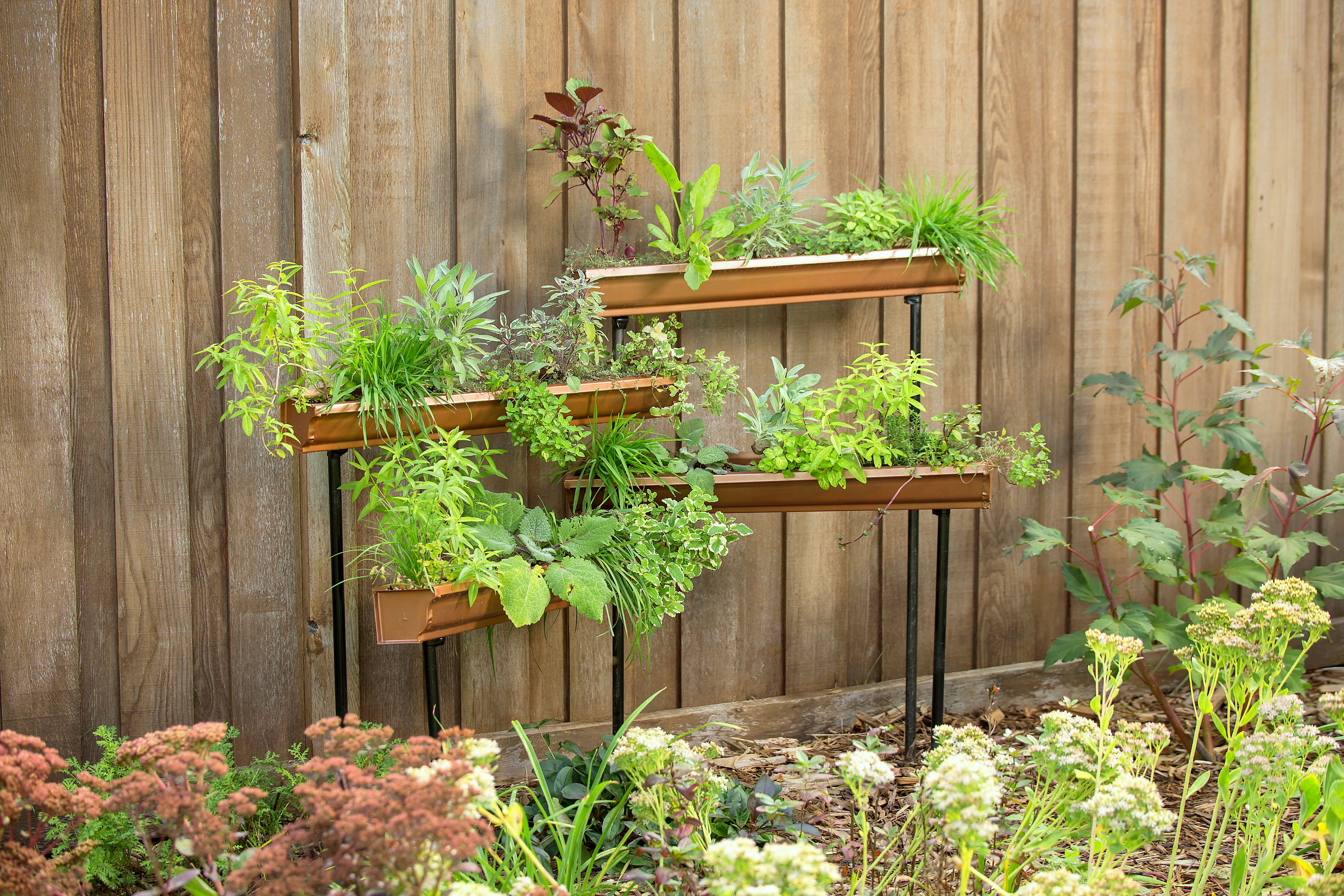
If you love doing a spot of DIY then this idea using old guttering will bring you joy.
To recreate this idea from Amy Andrychowicz, gardening expert and author of Vertical Vegetables: Simple Projects that Deliver More Yield in Less Space, and founder of Get Busy Gardening, you only need a couple to make this work and give them a spray if you want to upgrade the color. Use metal rods as legs and place them together at various heights as a statement display in your garden.
30. A vertical garden idea with storage
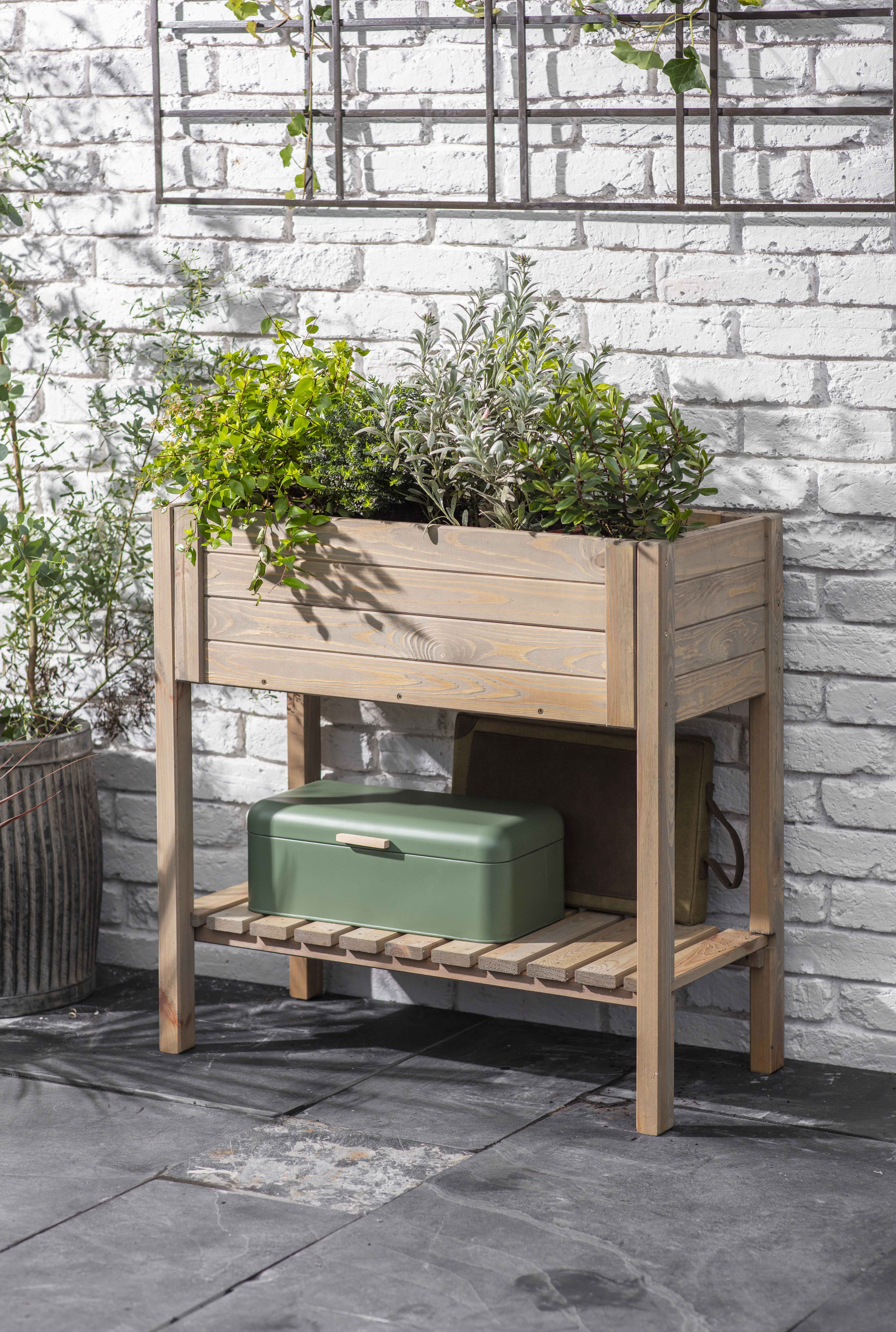
Anything that has a double use is a winner in our book. Garden Trading's Foxmore raised planteris essentially a raised garden bed idea if you don’t have the means to create them in your own garden – if you have a backyard for example, and it comes with a handy shelf underneath – perfect for storing your seeds, pots, and tools.
31. Be inventive and use a myriad of options
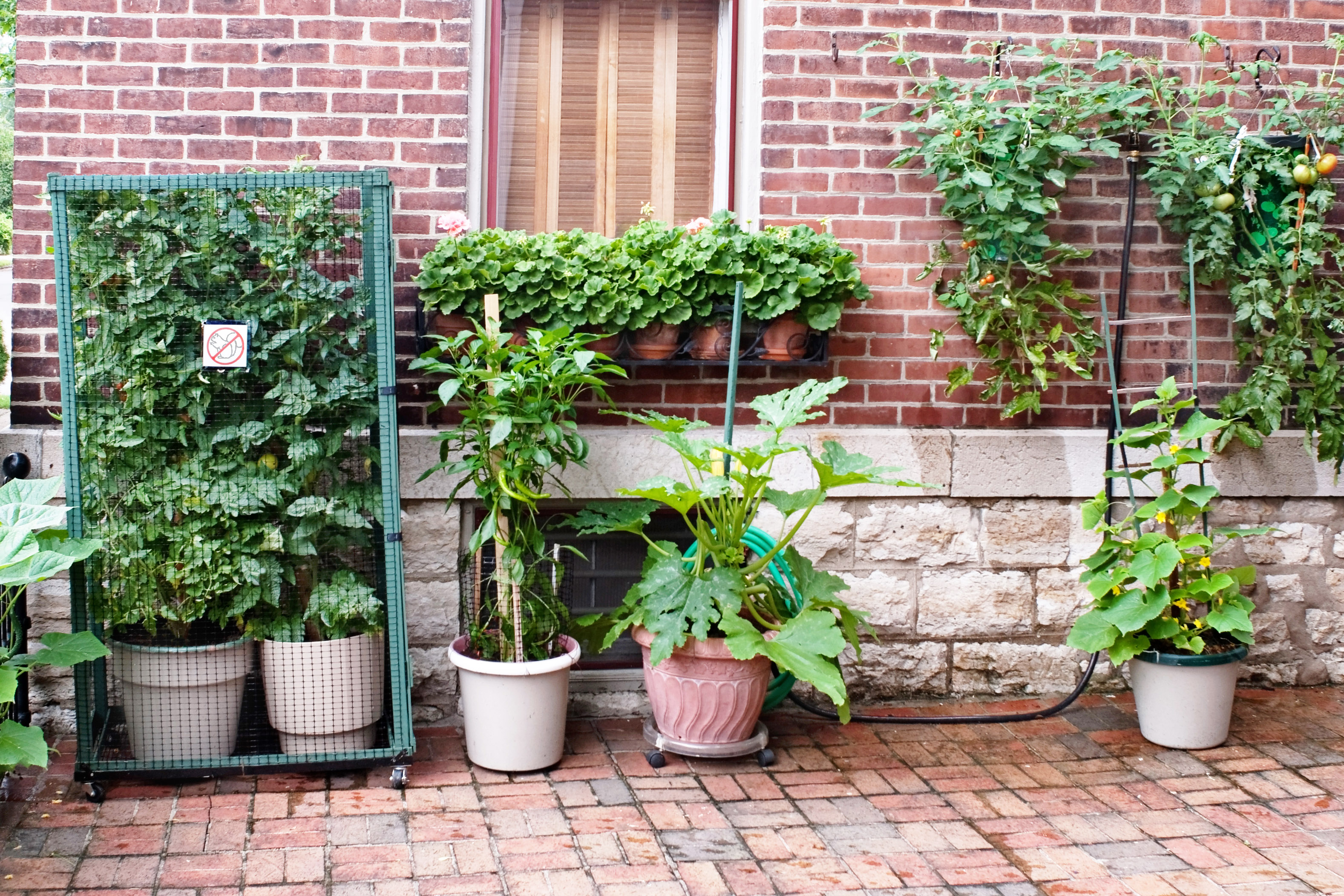
Ashley Christian, gardening expert and 5th generation homesteader living in Texas, writes about self-sufficiency on her website, Homestead Sweet Home, her advice is to use your vertical space to grow food:
‘Small raised beds or fabric planters lining the balcony will be the simplest way for you to get started growing your own food, even in the city. You can also utilize hanging containers, and railing or window box containers to maximize your space. You may want to add a living wall or aquaponics towers along the sides of your balcony to make use of every square inch.
The benefit of most of these containers is they can move with you. So if you ever move to another apartment or even a home, your beloved garden can come too. To avoid leaving any holes if you are renting, use damage-free command hooks for your hanging baskets, and free-standing living walls or planting towers.
If you use hanging baskets, you can place them directly above raised planter beds to recycle water and keep your plants from raining on your downstairs neighbor.’
What grows well in a vertical garden?
‘The first thing you need to do is decide where you're going to plant your vertical garden, so you know how much sun it will get if the spot is protected or will it get rained on? Some plants need specific requirements, so you want to make sure that you choose appropriate plants.'
'Plants that work the best in vertical gardens are small but have robust root systems and plants that climb. Ferns, vines, succulents, and flowering plants such as orchids, pansies, and verbena also do well in vertical gardens. You can also plant vegetables like peas, tomatoes, and radishes.'
'Herbs are another great choice, and most of them will do well; however, if you choose to plant rosemary, you want to keep an eye on it. You don't want it to grow too big, so if it does, make sure to transplant it to another pot,’ says Kassandra Flores, small space gardener from North Dakota and garden consultant at Juliei Salone.
How do you design a vertical garden?
We asked Amy Andrychowicz, gardening expert and author of Vertical Vegetables: Simple Projects that Deliver More Yield in Less Space, and founder of Get Busy Gardening what the key aspects to consider are:
Consider what you want to grow – make a list of the types of plants, it could be flowers, vegetables or herbs, or a mixture of all three, then you can think about the size of the plants, and the vertical structures that would work the best for each of them.
Placement – what is the sun exposure of the space where you want to put your vertical garden? It’s important to make sure that every plant gets the proper amount of light.
Garden style – vertical gardens aren’t merely functional, they can be decorative or even architectural elements in your yard too. So, when choosing supports and structures, make sure to match the style of your existing garden and landscaping, as well as your house.
Proportion and scale – it's important to design a vertical garden that is proportionate to the size of your space. For example, building a large pergola in the middle of a tiny garden plot will overwhelm the space, or putting a bunch of mismatched supports randomly throughout can look cluttered and messy.
Where should a vertical garden be placed?
‘You can put a vertical garden just about anywhere,’ says Kassandra.
‘Find a sunny spot in the backyard, on a patio, or balcony. You can put it on your fence or garden or have one inside your home. The point is to have fun with it and enjoy it!’
How do you build a free-standing vertical garden?
‘You can construct a vertical garden from a variety of materials, including pavers. Pavers are a great choice to create a solid structure that has aesthetic appeal,’ says Joe Raboine, director of residential hardscapes at Belgard.
Amy adds:
‘The easiest way for beginners to start is by using containers, which you can stack on top of each other. If you’re handy, then you could build a frame out of wood, and simply hang planter boxes on it.’
Aim high!
Period Living is the UK's best-selling period homes magazine. Get inspiration, ideas and advice straight to your door every month with a subscription.
*Stats provided by Compare The Market.
Join our newsletter
Get small space home decor ideas, celeb inspiration, DIY tips and more, straight to your inbox!
-
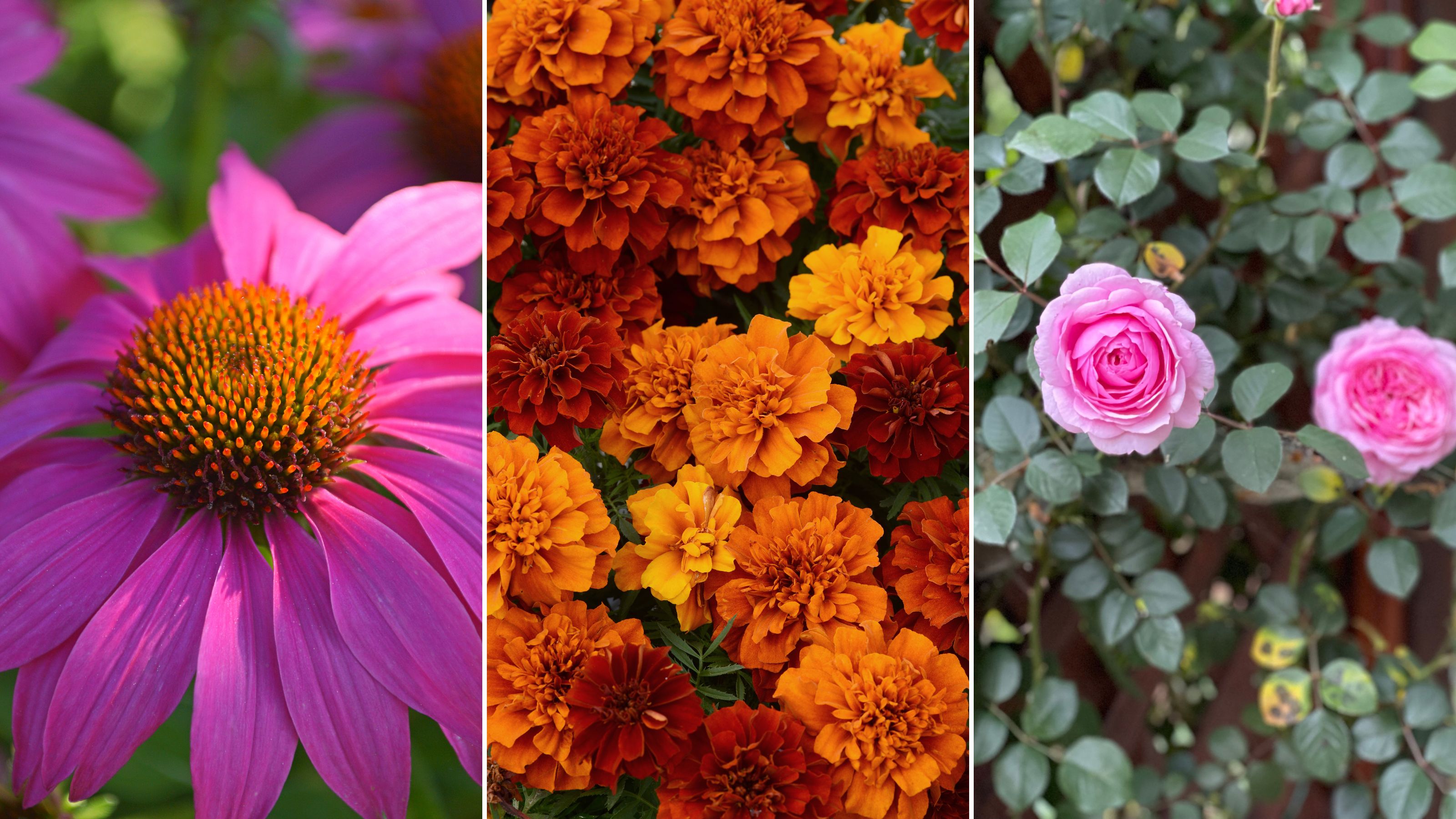 The 7 flowers to plant in August, according to gardening gurus
The 7 flowers to plant in August, according to gardening gurusKnowing what flowers to plant in August isn't always so clear-cut. But that's why we called in help from pro planters — here's what they said to pot.
By Becks Shepherd Published
-
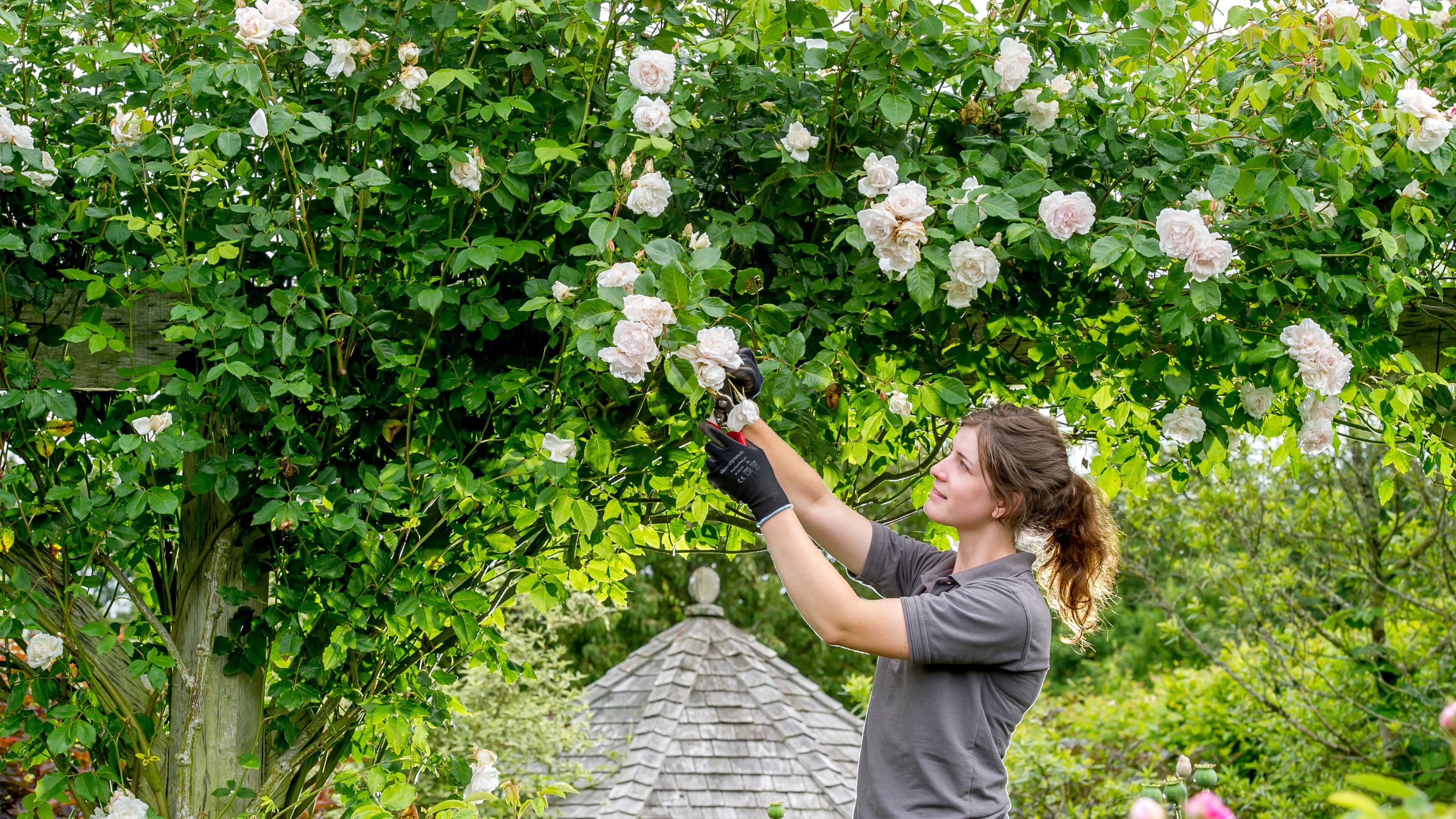 The 7 plants to prune in August — and the 2 pieces of greenery you shouldn't touch
The 7 plants to prune in August — and the 2 pieces of greenery you shouldn't touchWondering what plants to prune in August? We asked a gardening expert for their top tips plus info on what pieces of greenery to avoid pruning this month
By Becks Shepherd Published
-
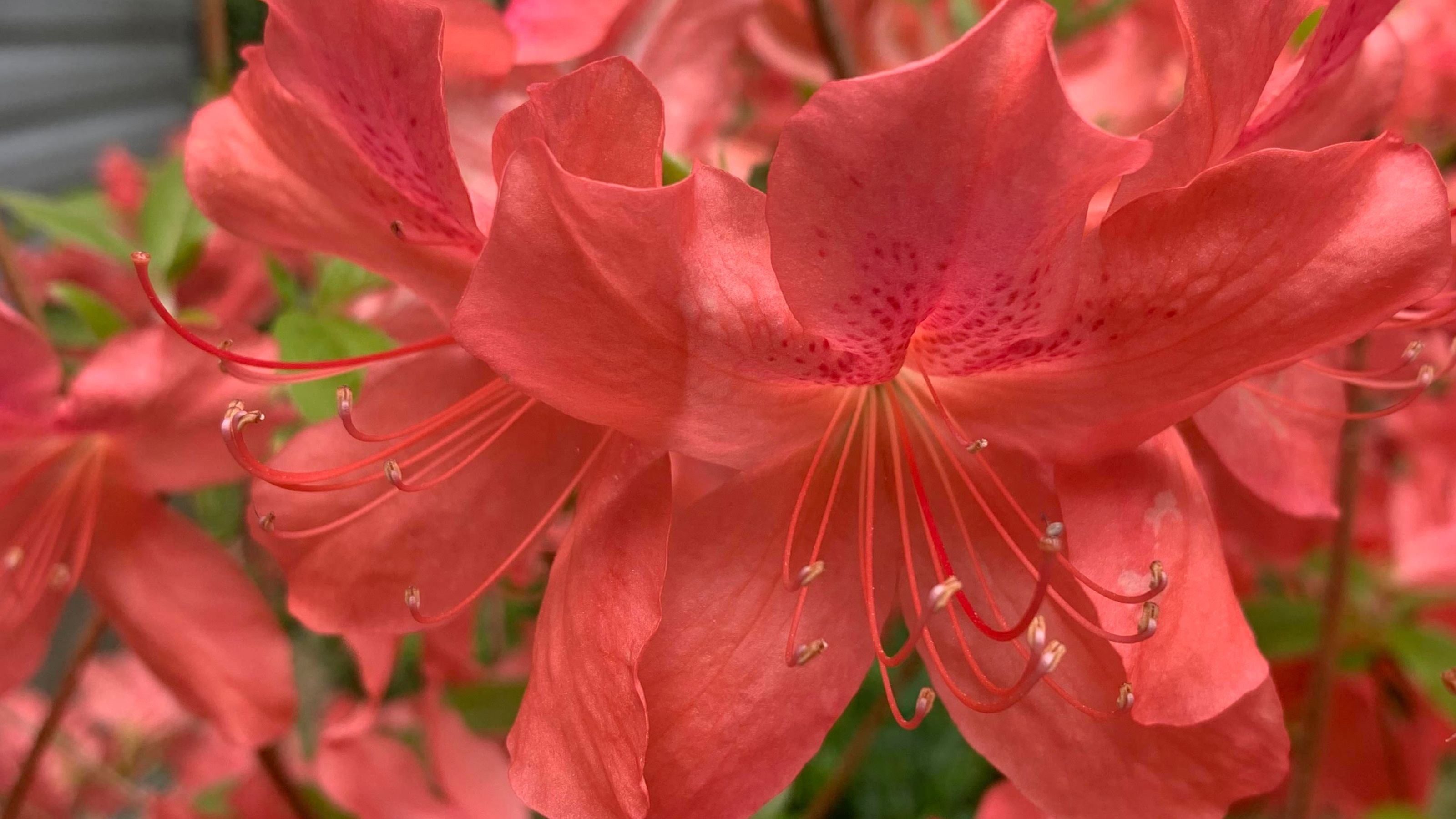 Do you need to deadhead azaleas? Top tips for pruning these flowering shrubs
Do you need to deadhead azaleas? Top tips for pruning these flowering shrubsWondering whether you need to deadhead azaleas? We asked a gardening expert for their top tips for looking after these blooms
By Becks Shepherd Published
-
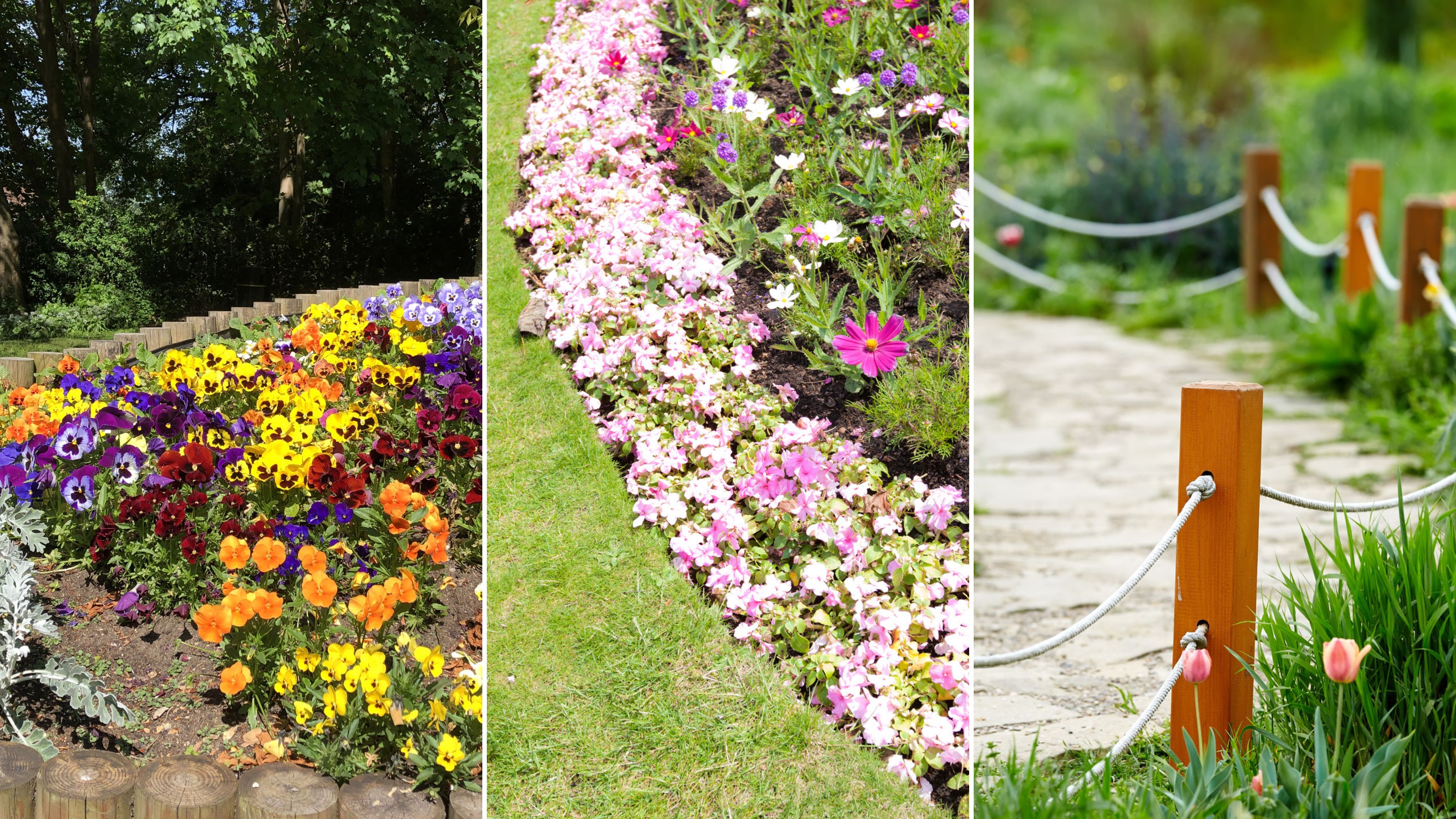 14 lawn edging ideas that will add definition and style to your backyard
14 lawn edging ideas that will add definition and style to your backyardWant to neaten up your lawn with lawn edging ideas? From fresh flowers to laidback bricks, we've scouted out materials and styles that look brilliant
By Eve Smallman Published
-
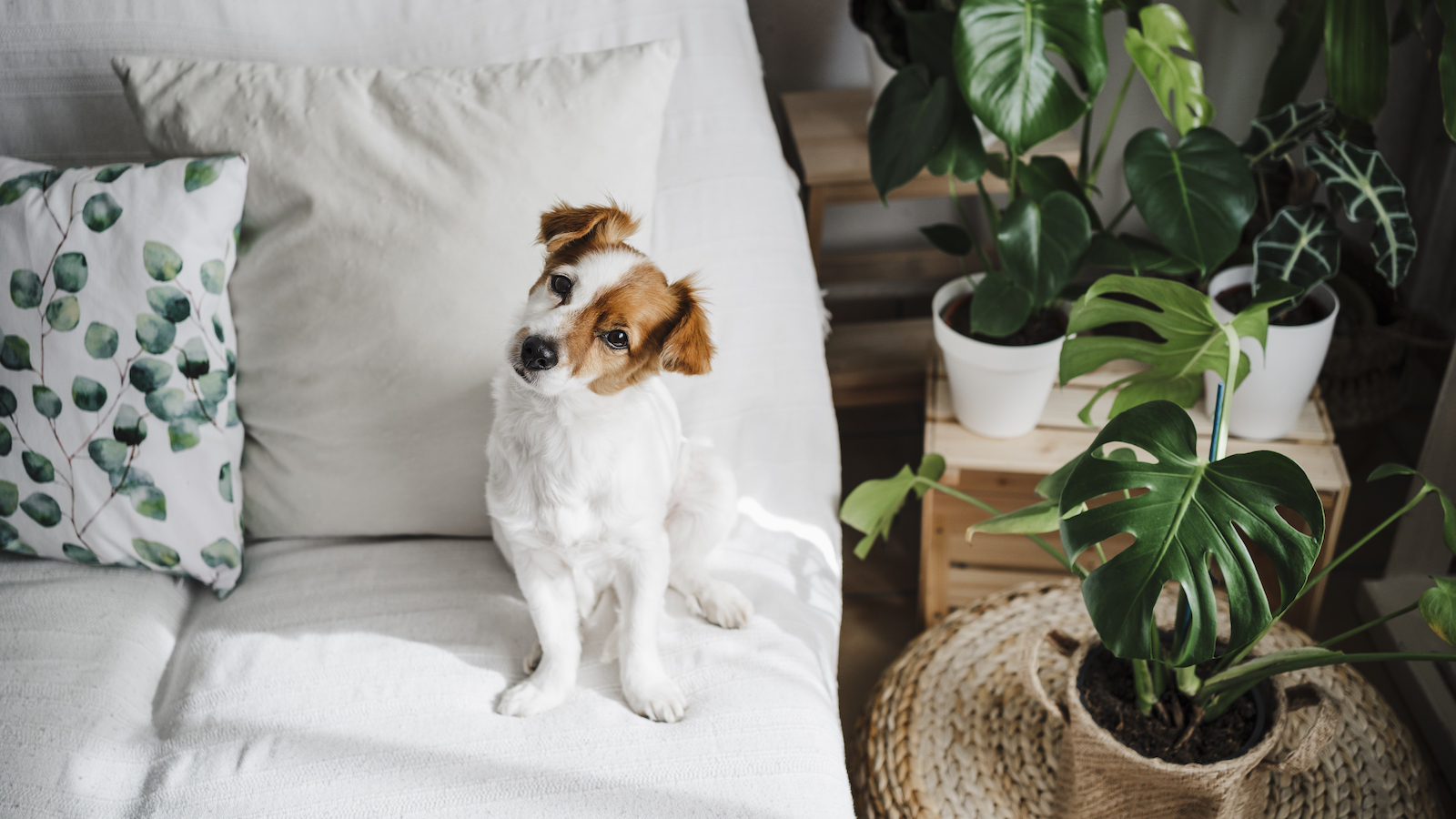 Which houseplants are toxic to dogs? Vet experts pinpoint problem plants and solutions
Which houseplants are toxic to dogs? Vet experts pinpoint problem plants and solutionsWondering Which houseplants are toxic to dogs? We spoke to vets about the problematic leafy greens, what they trigger in dogs, and how to find a solution
By Danielle Valente Published
-
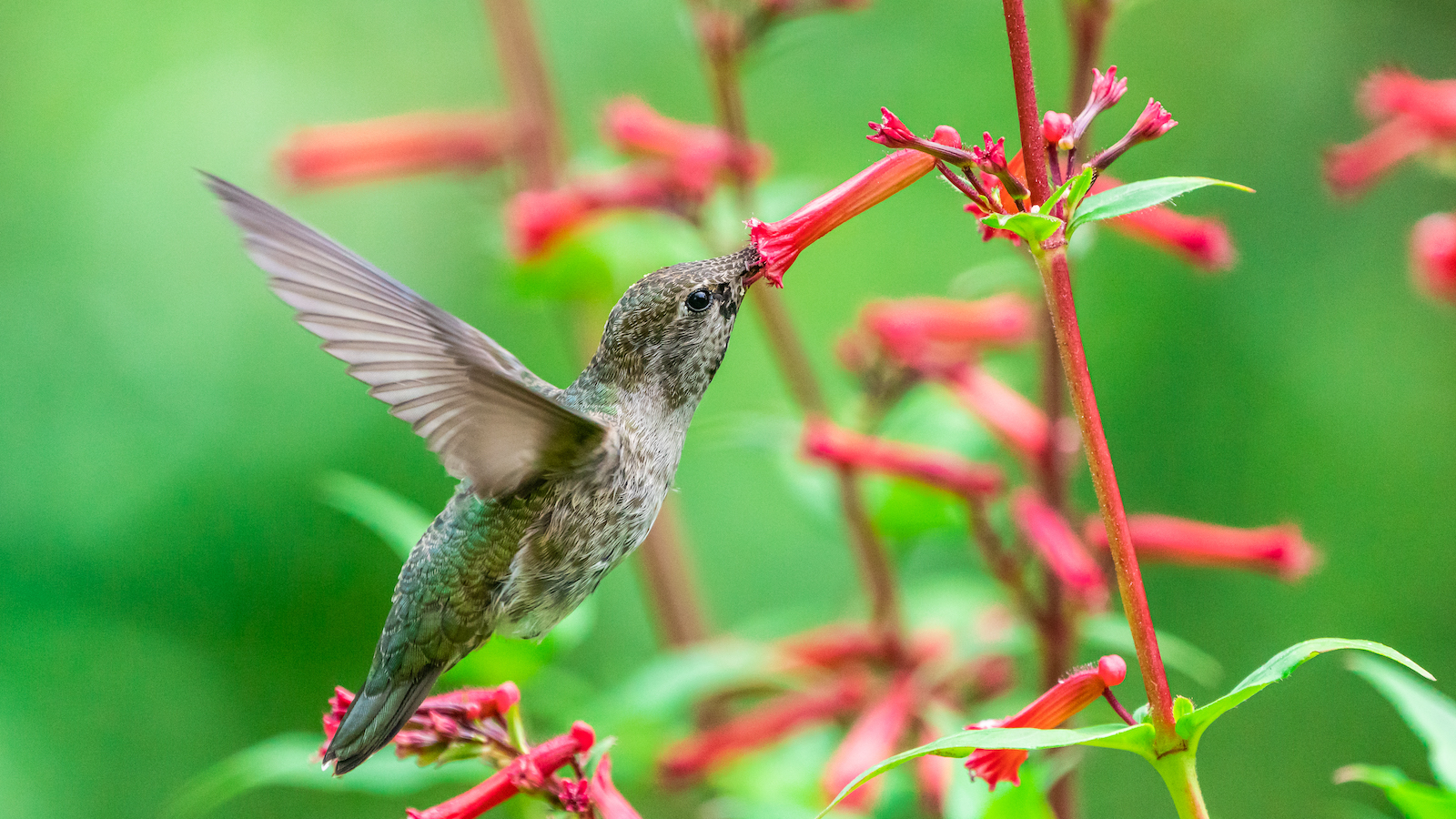 How to attract hummingbirds to your backyard, according to ornithologists
How to attract hummingbirds to your backyard, according to ornithologistsTrying to figure out How to attract hummingbirds to your backyard? These ornithologist-backed tips will guarantee you visitors in no time
By Danielle Valente Published
-
 Does hydrangea bloom every year? Pros spill the dirt on the "garden favorite" and when to expect it
Does hydrangea bloom every year? Pros spill the dirt on the "garden favorite" and when to expect itWondering, "Does hydrangea bloom every year"? We asked the pros all about the garden favorite and how often to expect them — here's the dirt.
By Danielle Valente Published
-
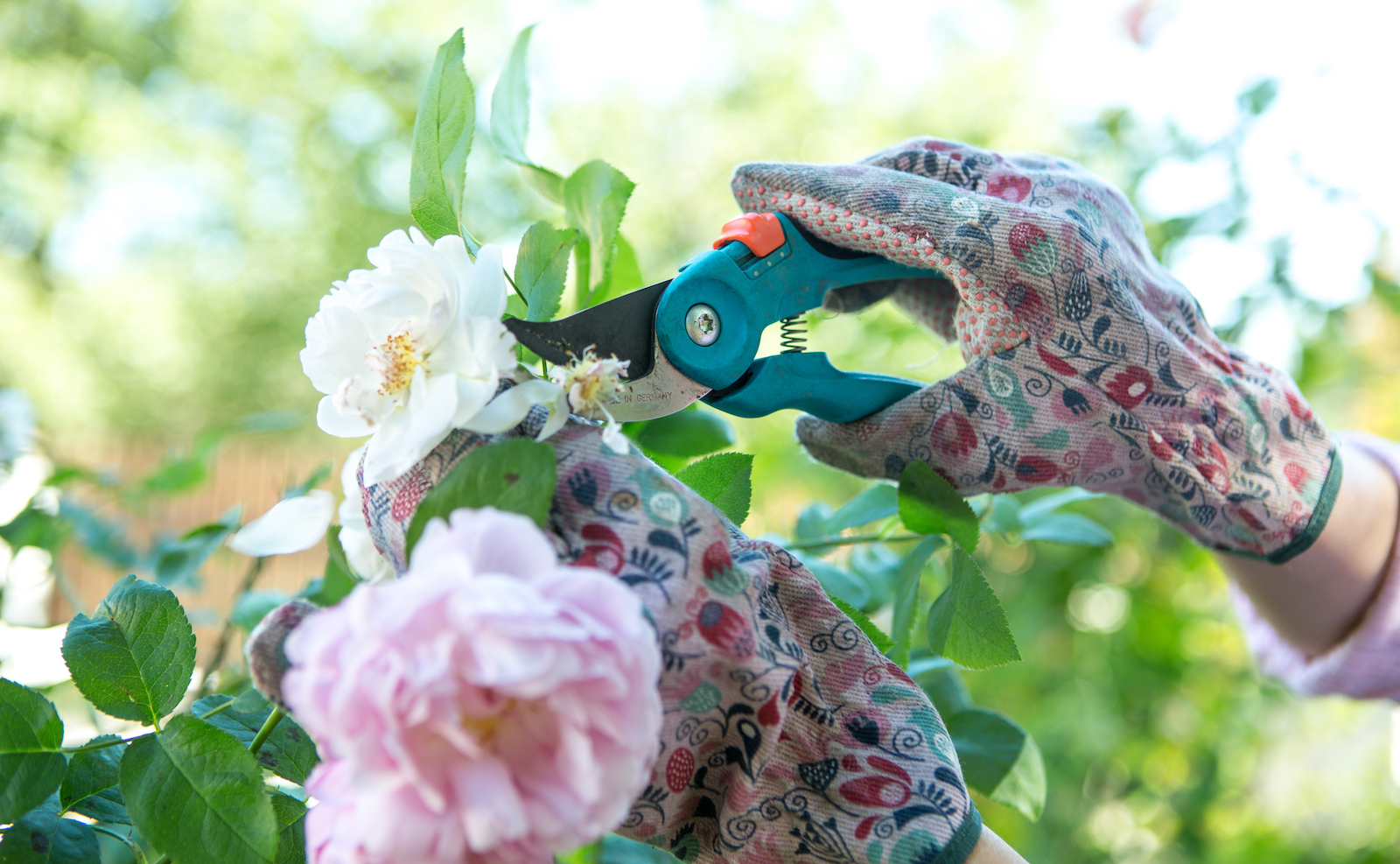 What to prune in spring — experts reveal how to get a lush, full garden
What to prune in spring — experts reveal how to get a lush, full gardenCurious what to prune in spring? We asked gardening experts for their top tips for a luscious, thriving garden
By Danielle Valente Published
